
I’ll be the first to admit that I’m not much of a Volkswagen Golf guy.
It’s kind of ironic, because I’ve evolved into such a Porsche nut in the last couple of years, and we all know that brand’s history. Many of my friends – close friends, actually – are hardcore VW guys, too. But I guess I’ve just never really understood the mantra behind them; I never felt the pleasure of the über-slow, front-wheel drive hot hatches that everyone seems to rave about. Not that I haven’t driven one or anything, and I don’t doubt the testaments over how fun they are to drive or anything of that sort either. I’m sure they fit the fun bill quite well, actually. But have you driven an E30?

Aside from that, the other thing that turned me off VW Golfs – at least here in the States – was that execution on most builds was almost always cookie cutter. Every game-changing showstopper I’ve seen, whether it be new or old, has always been peak iconic when done by someone in Europe. That’s partially due to all the cool options and trim packages that Euro-spec cars had versus the US ones, but also because the Europeans just have a special love affair with the humble Golf.
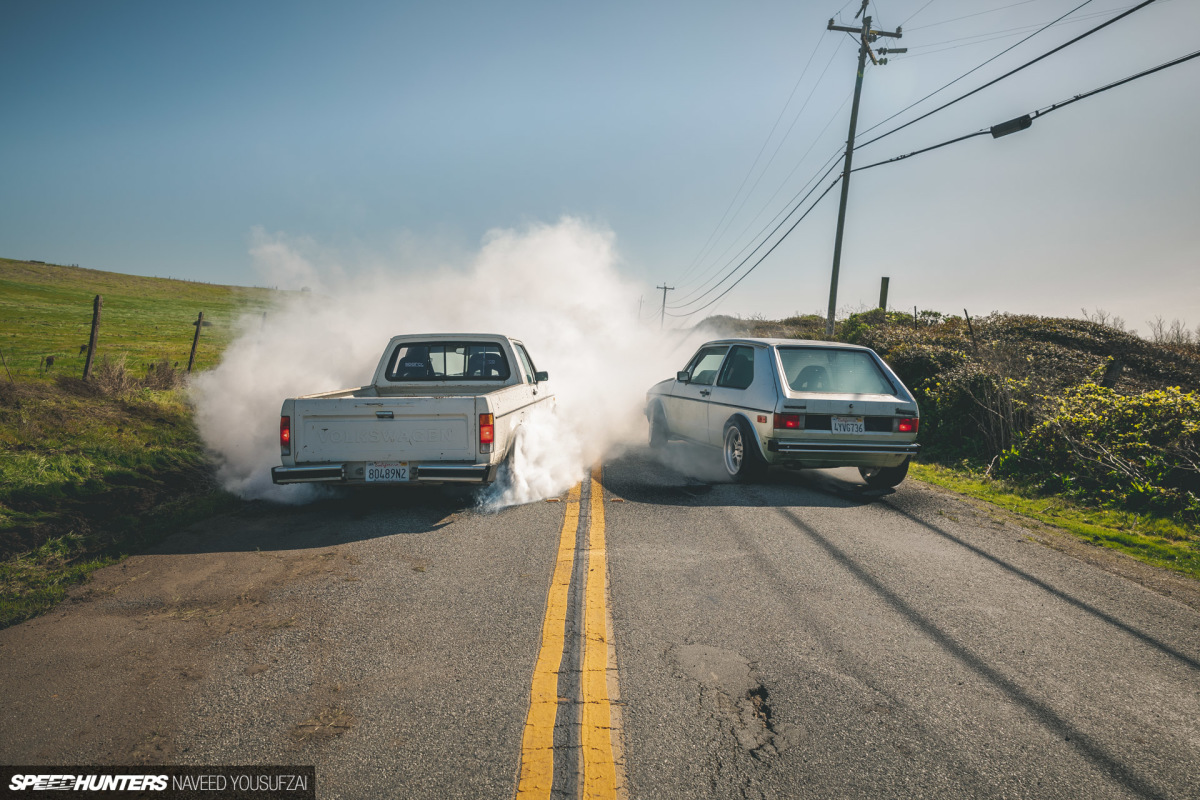
A few months ago though, I saw a video of something quite spectacular on my Instagram feed that began to change my perception of VWs. My buddy Jon posted a video of a couple of Golfs, one being a Caddy, and one being a Rabbit, making heaps of noise and smoke in a small parking lot.
I was probably as mind blown as you guys are from seeing the opening image in this story, because these two little monsters were rear-wheel drive, and the noises coming from them were totally unexpected as they continuously bounced off their rev limiters, while burning through their rear tires. I immediately thought, ‘those are not supposed to do that…’
So I messaged Jon and asked what was going on. His response is what ultimately led to this story, so here we are. For the first time on my end, a story about some wicked Volkswagens that weren’t very cookie cutter, from this side of the pond.
Rick’s Rabbits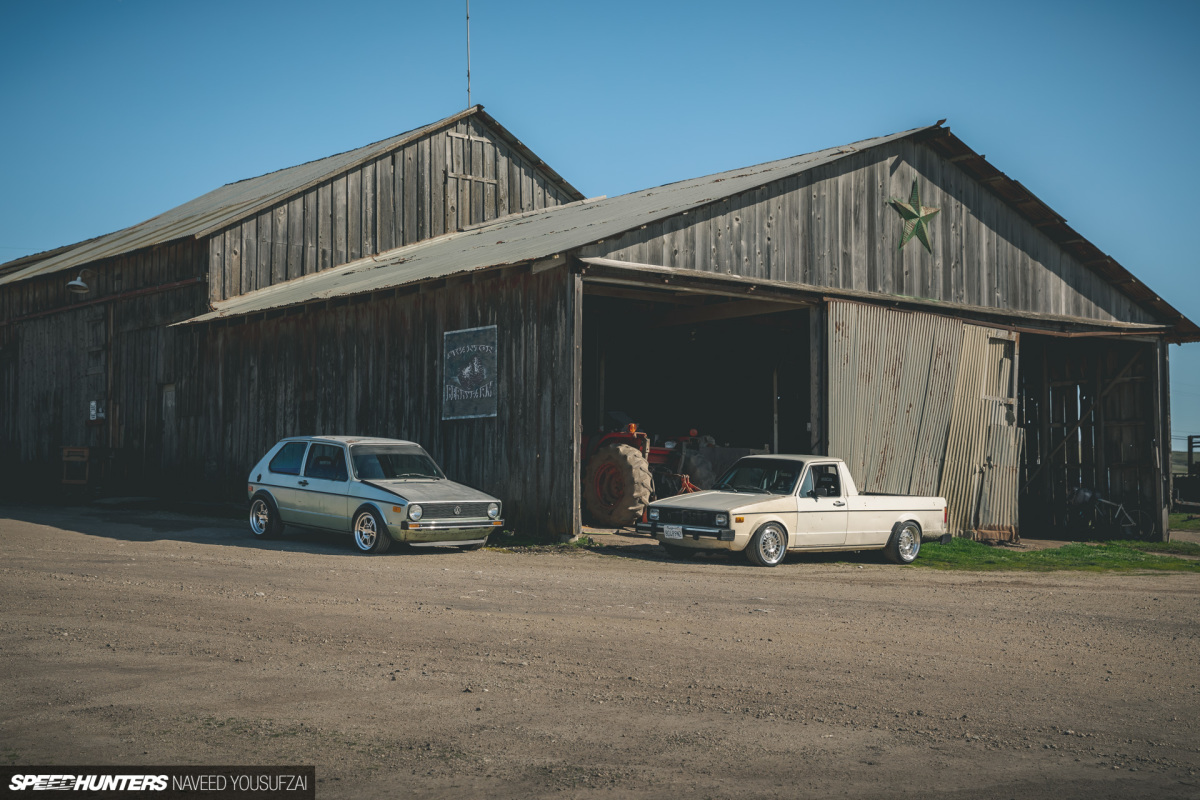
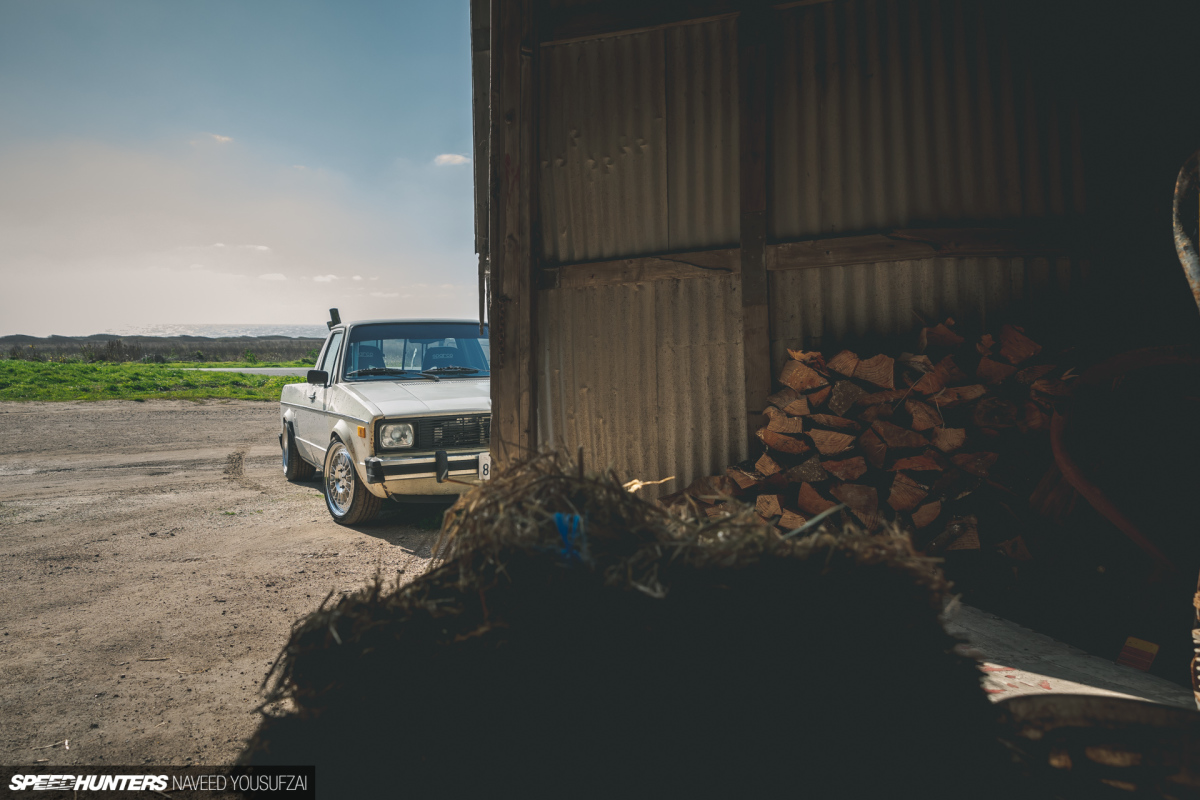
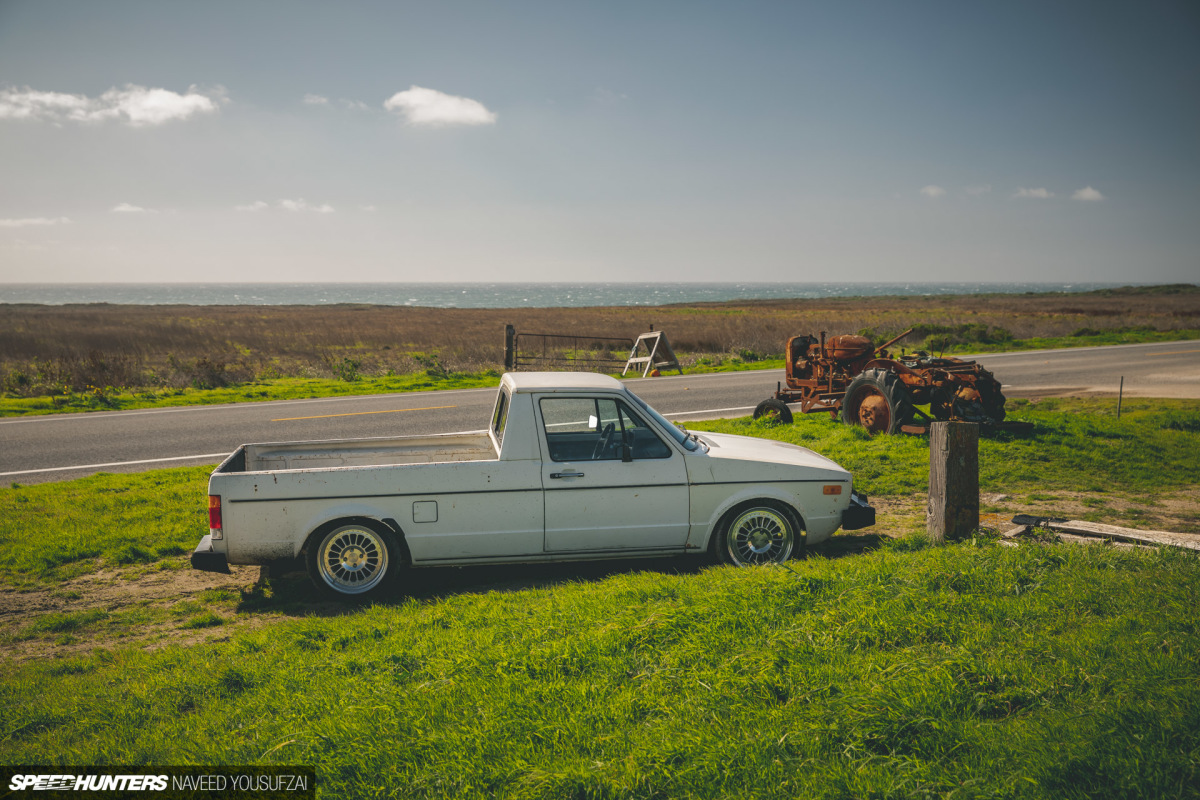
Rick Case started out like most young adults entering into the world of automotive passion, lusting after the newest and shiniest cars. But as the years passed by, he developed his own niche in the realms of vintage VAG vehicles, and eventually went on to own over 100 cars over the course of two and half decades.
The older survivor cars are what resonated most with him, and Rick saved many from facing the gruesome death of the wrecking yard. Eventually though, as it usually goes, Rick decided to keep a couple of projects for himself, but the ethos in mind for both builds were traditional American sleepers. Cars that you’d never think to give a second look, but that packed a heavy punch underneath their scars. And that clearly worked out.
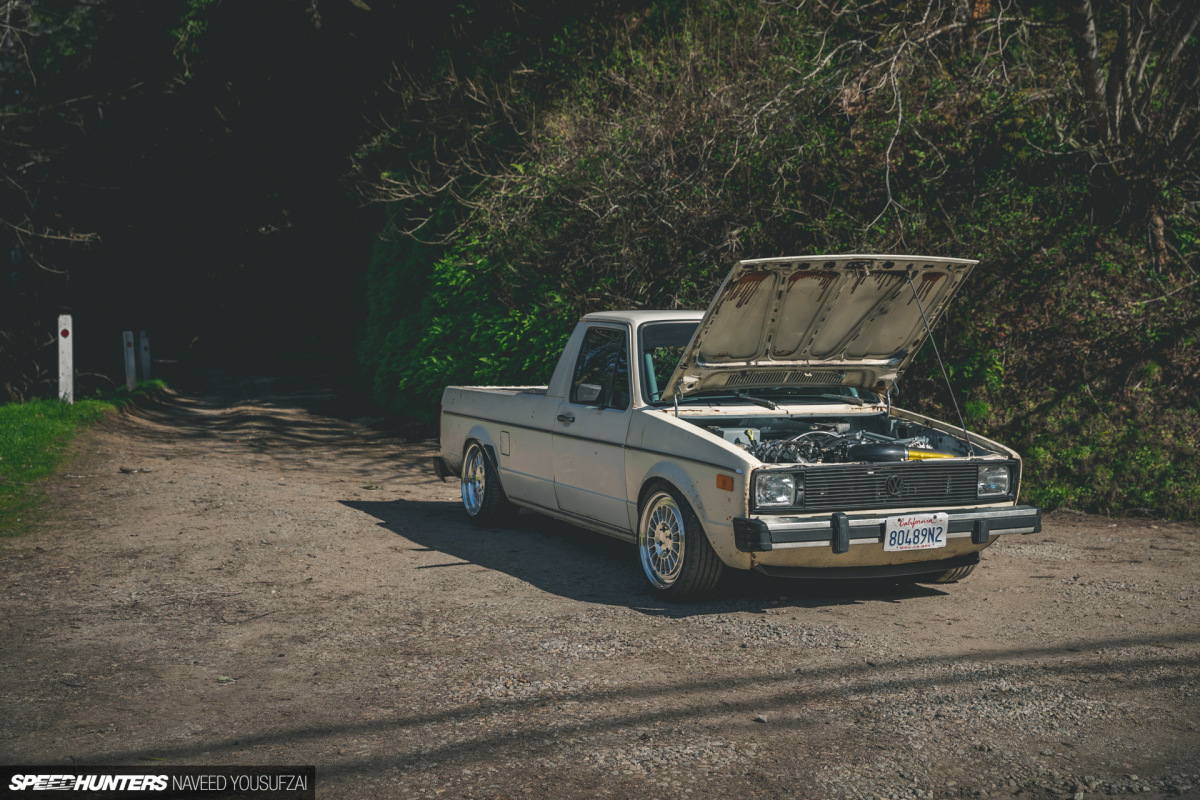
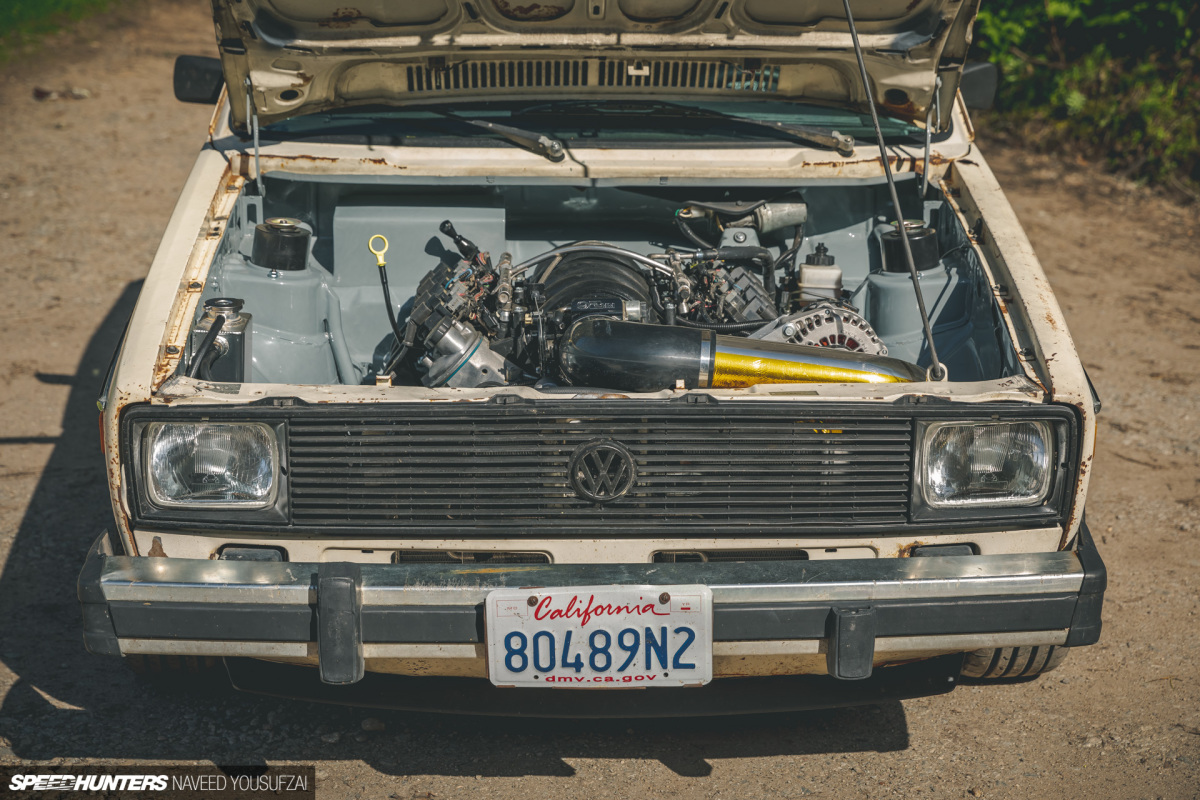

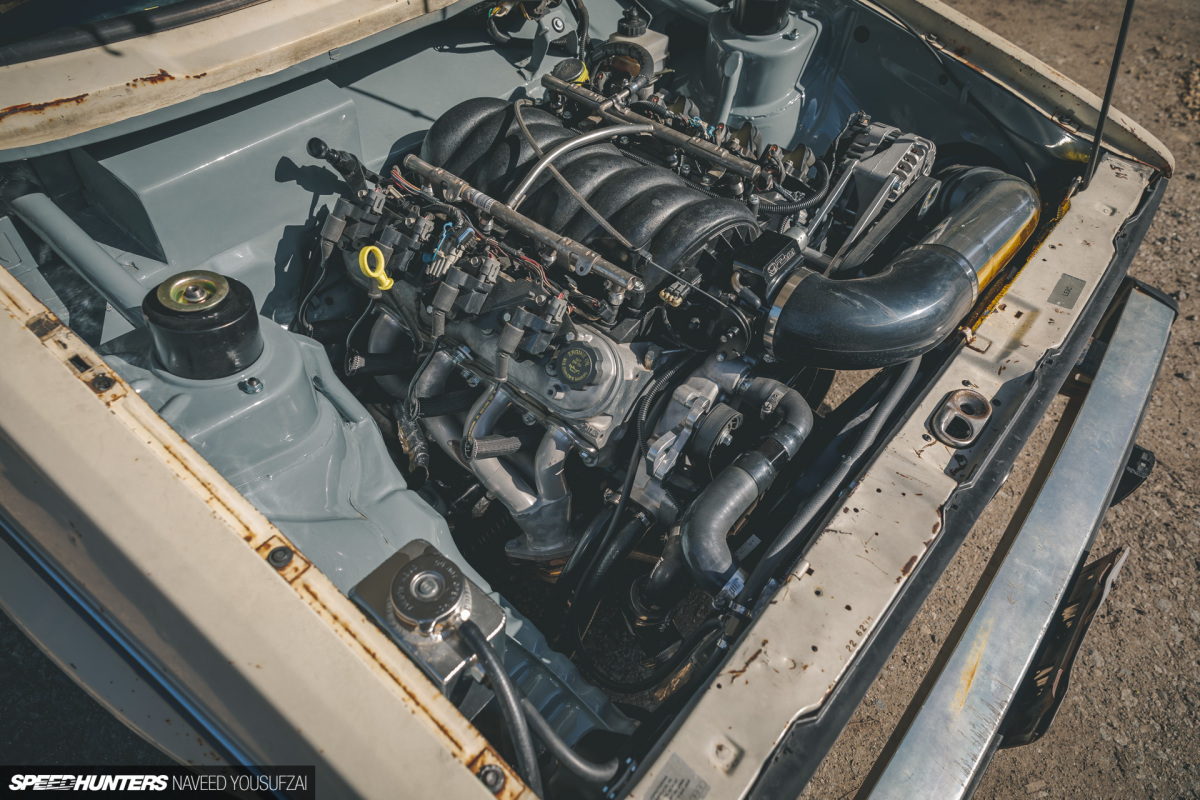
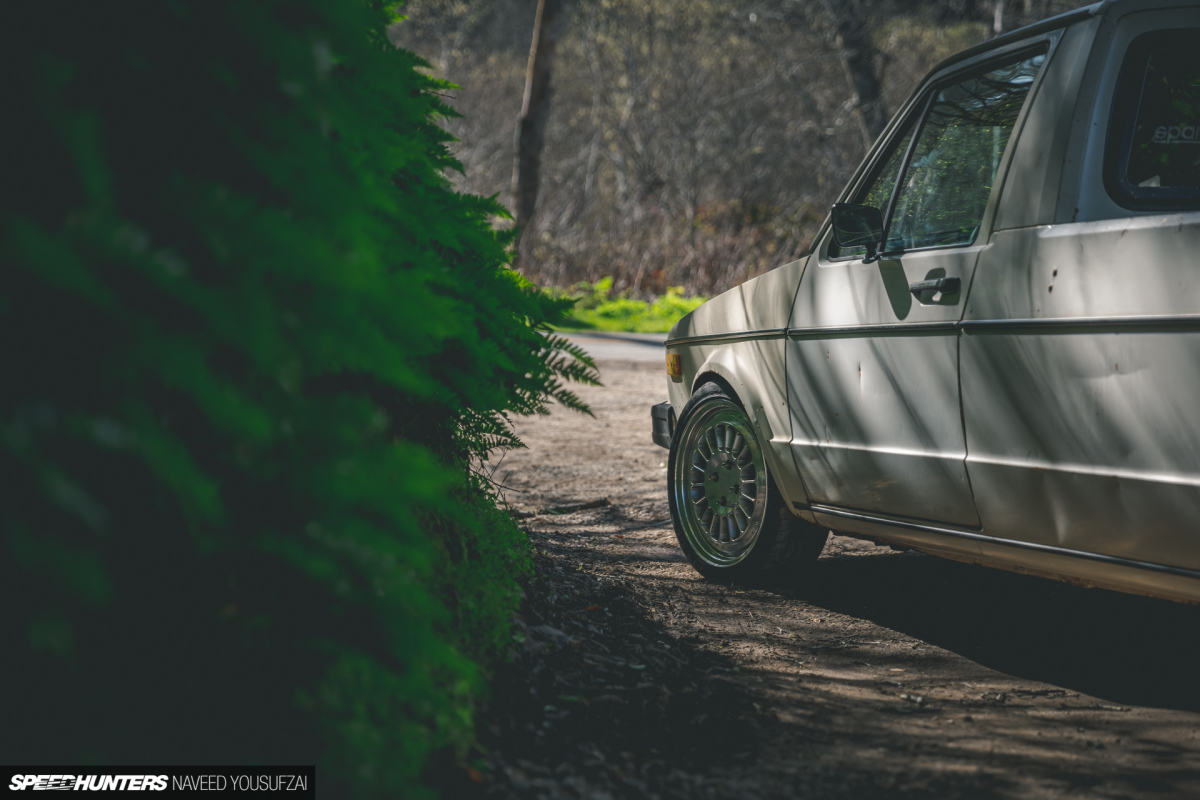
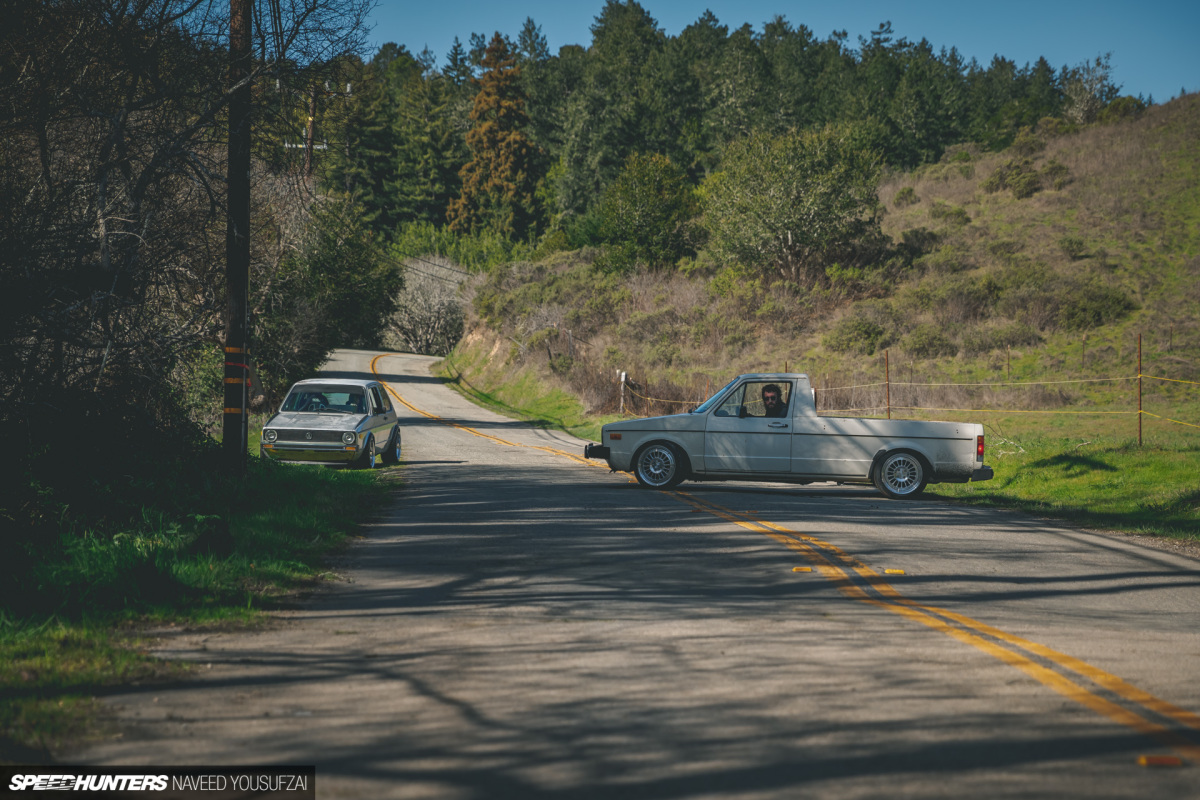
Both the Caddy and the Rabbit started out as distress calls; they were on the verge of dying when Rick came to their rescue and made them what they are today.
The Caddy was the easier project of the two, given that it’s pretty well preserved underneath the surface rust. The major set back for Rick though, was that a V8 swap hadn’t been done before to his knowledge. His solution was to gather a few friends and start from scratch. It ended up taking about two months to complete, and retains the original unibody, stock frame rails, stock shock towers, stock bed floor, and so forth. From a stand still it’s modest and not very intimidating, but the minute the ignition is turned, a different story is presented. The same can’t be said about the Rabbit, though.
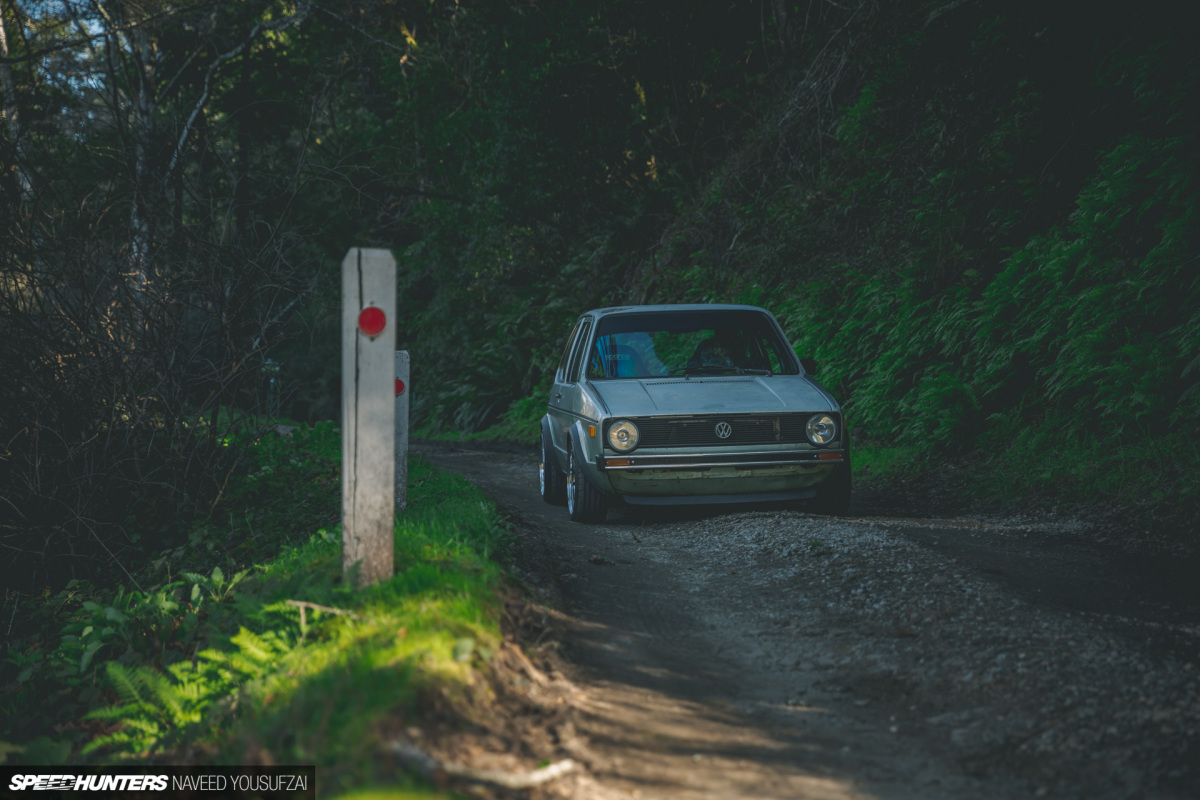
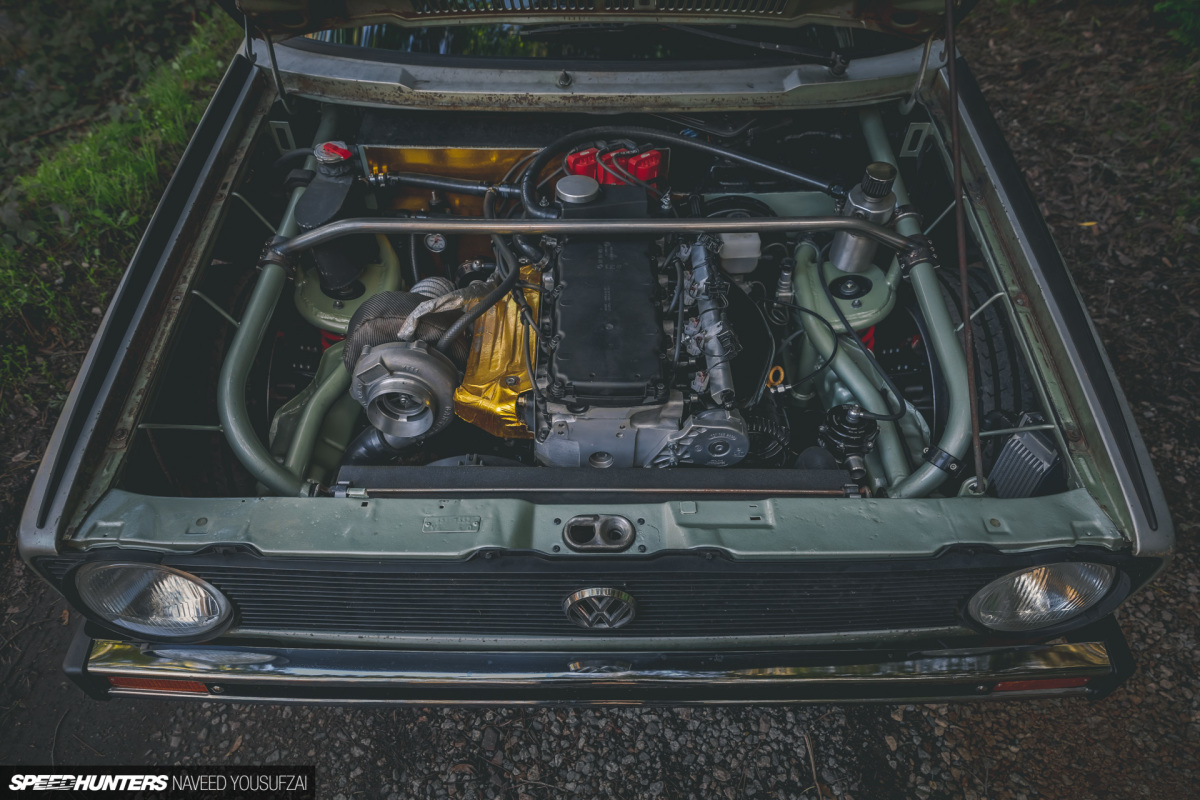
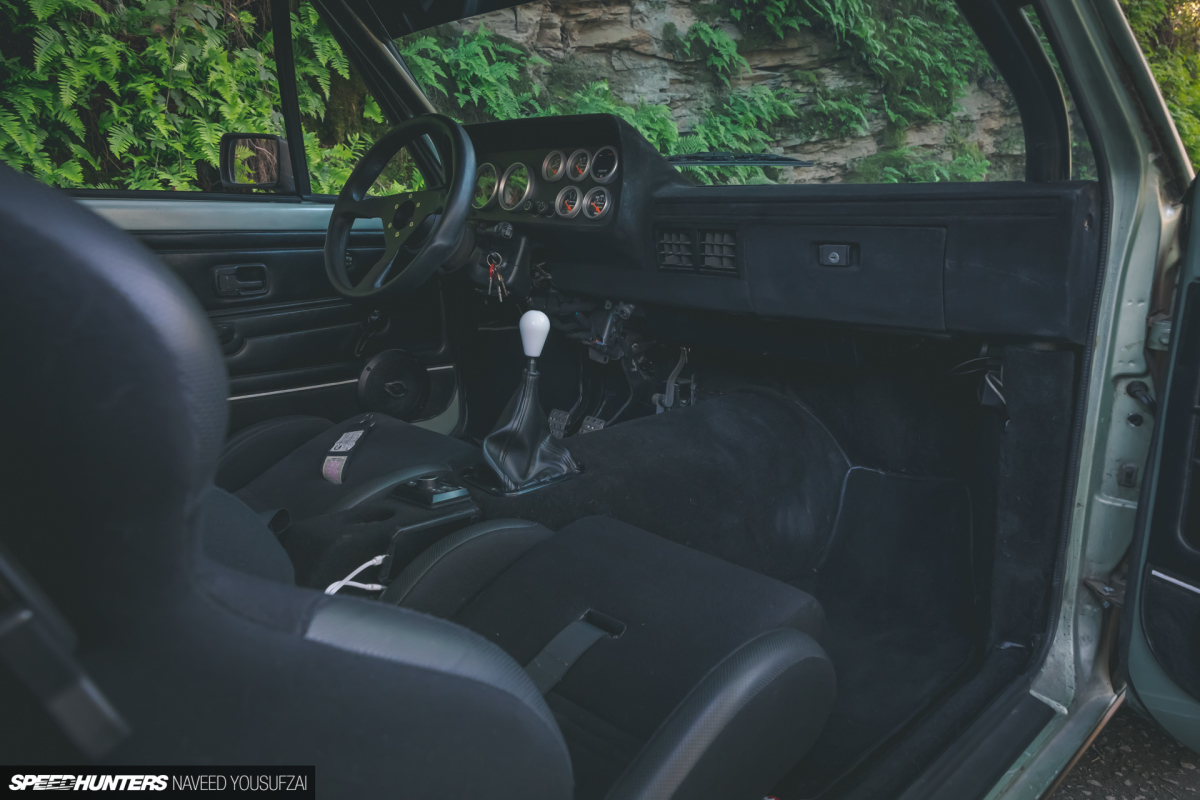
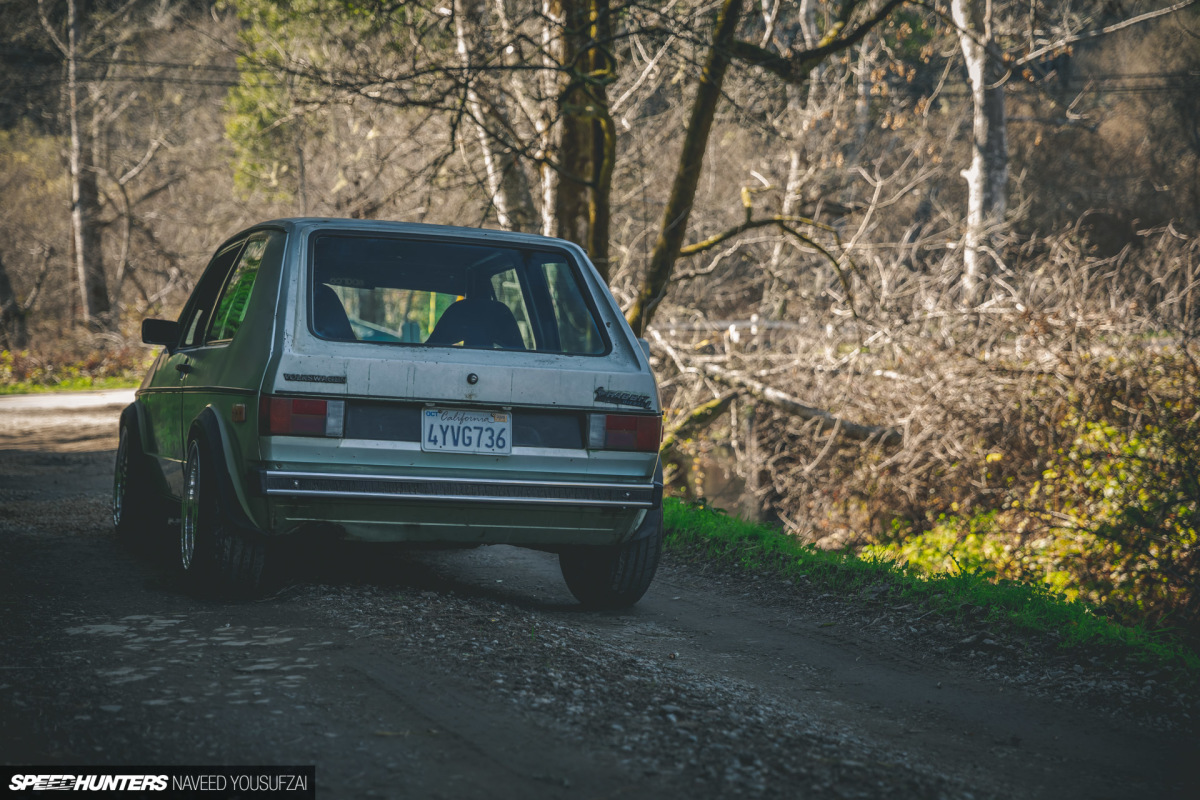
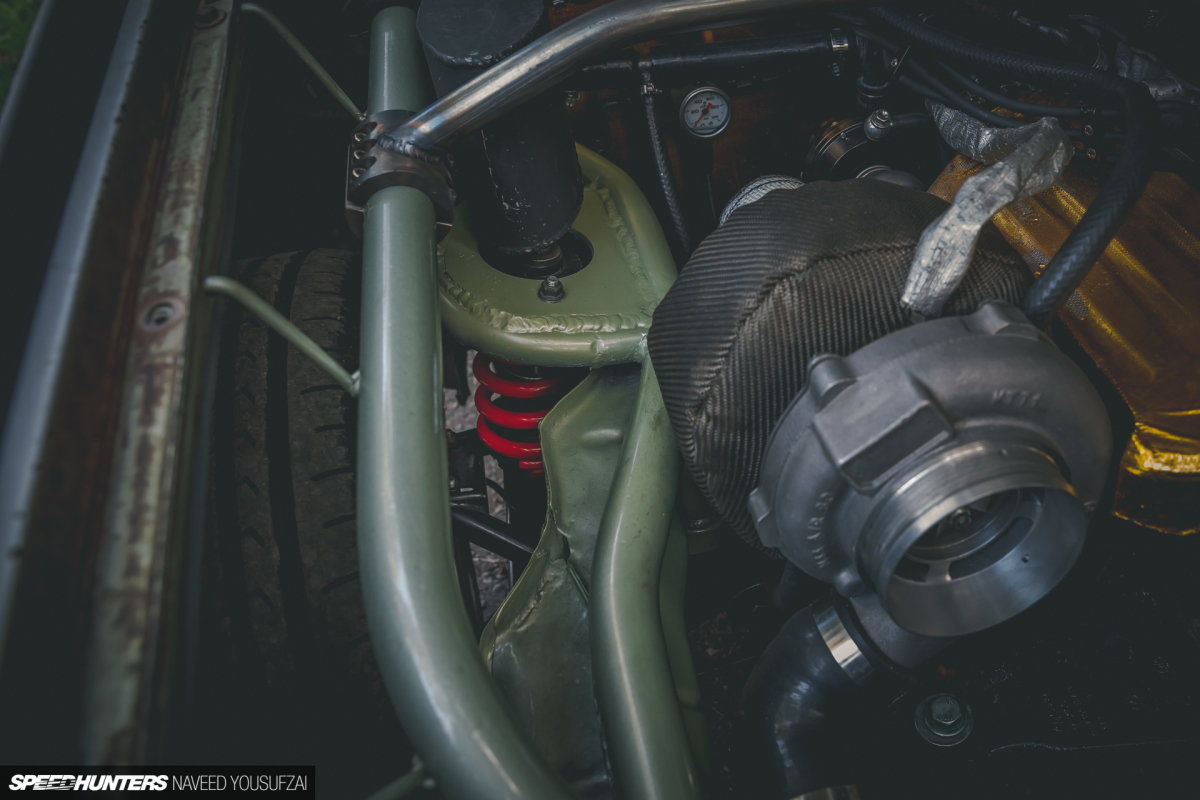
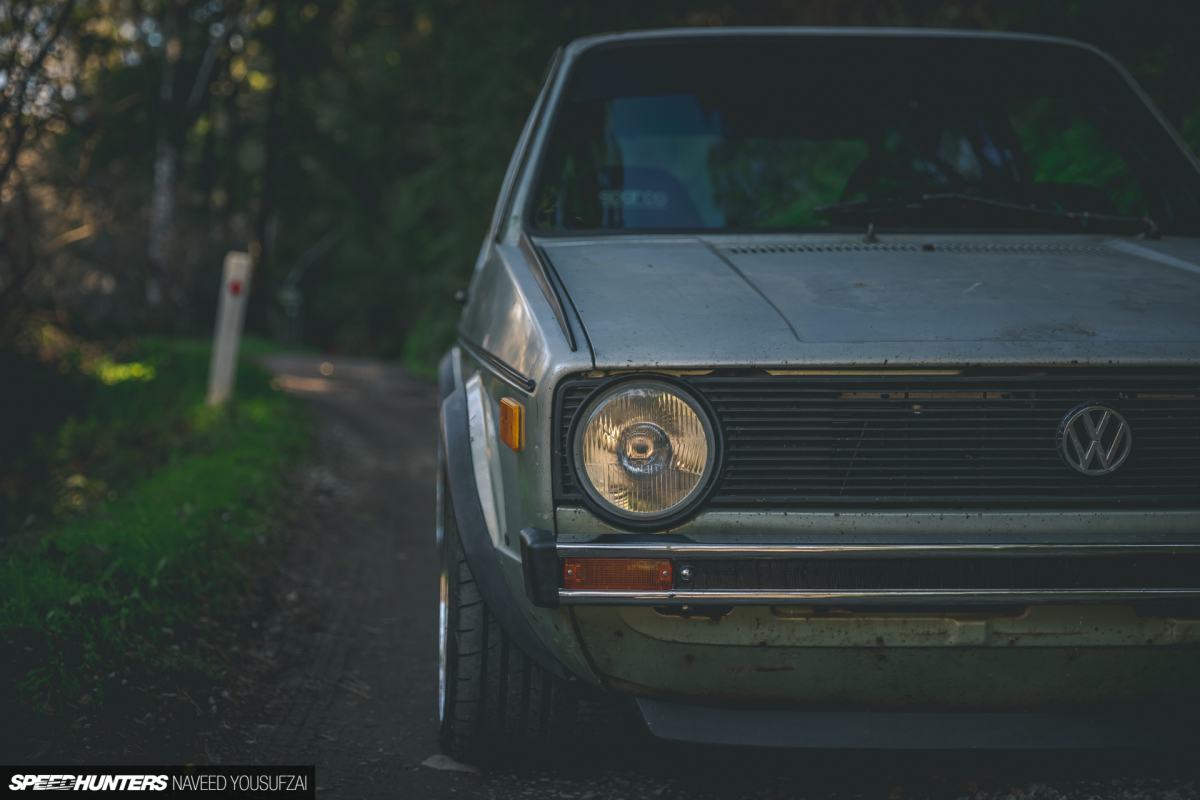
While both cars were meant to be sleepers – and they surely are – the Rabbit is quite the beast underneath all that beautiful patina, though its current configuration isn’t its initial. The Rabbit started out as a diesel shell that was once used for autocross, and had since been left in a yard with no rear floor and no motor.
Rick’s first attempt at the car resulted in a rear-engine, rear-drive setup using a 2.9L 12V VR6 turbo engine. While that is quite the setup in itself, it turned out to not be as fun as Rick had initially planned. Heat management in the cabin made it tough to drive the car, and most importantly, the weight in the back on top of the rear axles made doing donuts a tad bit difficult. So after a year or so of no fun, the VR6 motor was removed, and the car underwent its major transformation.
The end result is what you see here, essentially a Rabbit shell mated to a Miata chassis. Not as in a removed Rabbit body placed on top of a Miata though, but more so Miata subframes front and rear, with all of the custom fabrication needed to make everything synchronize properly together. It was a two-year project with lots of trial and error amongst a steep learning curve, but based on the photos and videos above I think I can speak for all of us when I say that I’m glad it happened.
A New Perspective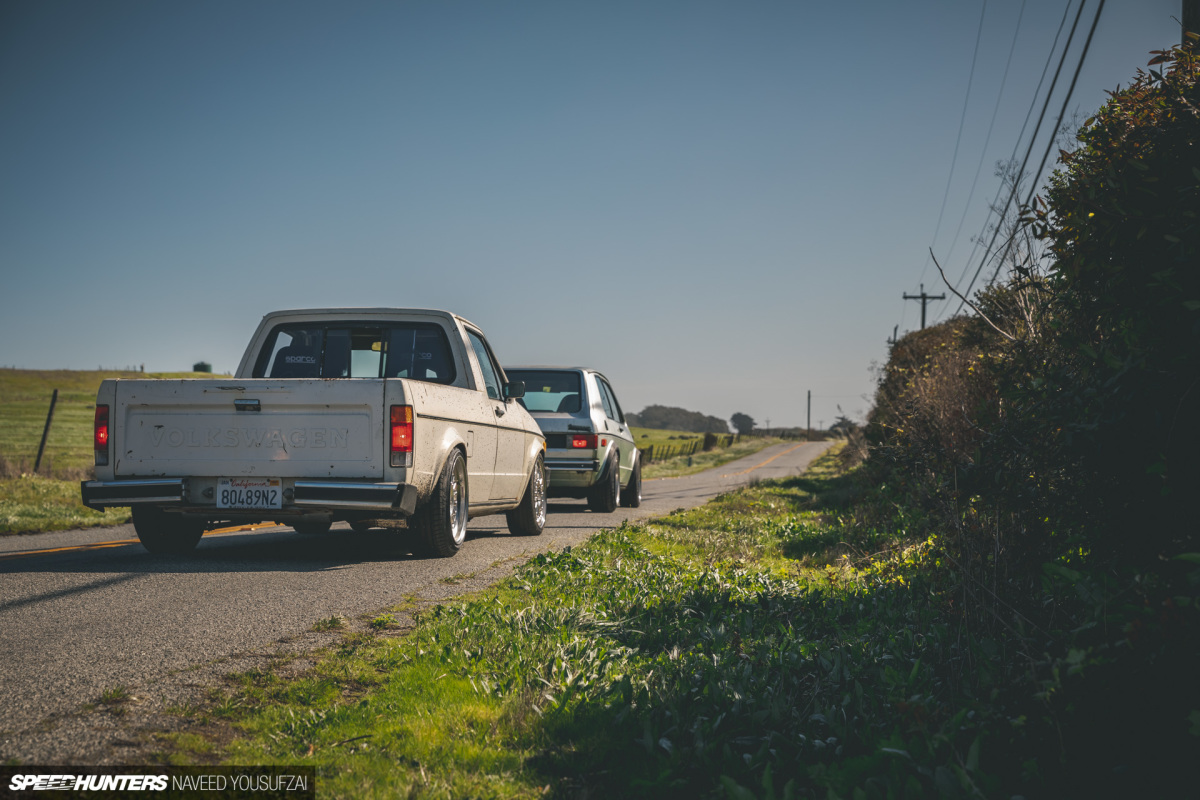
After seeing these two beasts in person, and what they were capable of, I have to admit that I think I’m starting to understand the persistence of enthusiasts behind these little cars. They are cheap, they serve their intended purpose, and it’s clear that they can be molded into whatever you want them to be, so long as your passion and vision surpass your sanity.

With this story alone, I’ve learned to love and appreciate the spectrum of personalization that comes from the vintage VAG community, whether that be a crazy perfect restomod from Europe, or an outright all American-inspired sleeper that can do quarter mile burnouts on command.
Expect more on interesting VWs coming from my way in the future.
Naveed Yousufzai
Instagram: eatwithnaveed
Email: naveed@speedhunters.com
Rick’s 1980 VW Caddy
6.0L LS LQ4, 4l80e trans, Brian Tooley Stage 3 drop-in truck cam & valve springs, 8.1 marine injectors, 92mm throttle body, LS2-style intake manifold, shorty headers, full single 3-inch exhaust, custom tune, Ford Mustang 2 steering rack, Ford Explorer 8.8 rear end ( narrowed & custom drilled 4×100), Caltrac bars, custom DD torque converter, narrowed Corrado dash, Tanksinc under-bed fuel tank, 1.5 DOM tubing & plates to keep it all together, Speedhut gauge, Sparco seats, Jongbloed racing wheels.
Rick’s 1979 VW Rabbit
3.0L 12V vr6, stock crank, stock rods, forged pistons, ARP mains, rod , studs, big valve head, mild port and polish, springs retainers, Integrate Engineering cams, Bosch 2,200cc injectors, Walbro 450lph pump, Garrett GT3076R turbo, TiAL blow-off valve & wastegate, MicroSquirt ECU, custom bell-housing adapter to CD009, GKTech shifter, Ford IRS 8.8, Truetrack diff, 3.08 rear gear, Drive Shaft Shop axles, custom upper front & rear control arms, Wilwood front brake kit, Keisler front knuckles, SLP bump steer kit, modified larger front & rear sway bars, modified Mk3 VW brake booster, 24mm master cylinder, Wilwood clutch pedal & master, custom floor & firewall, narrowed S1 dash, Speedhut gauges, Sparco seats, Jongbloed racing wheels.

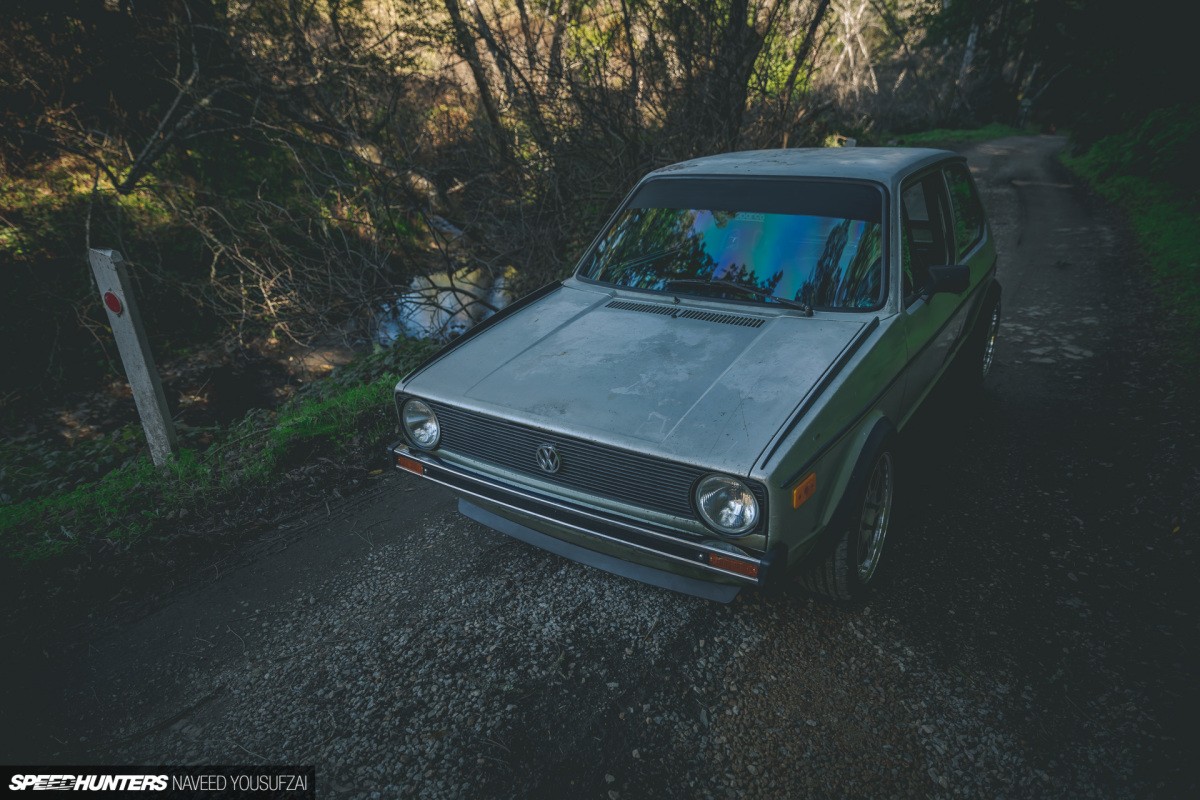
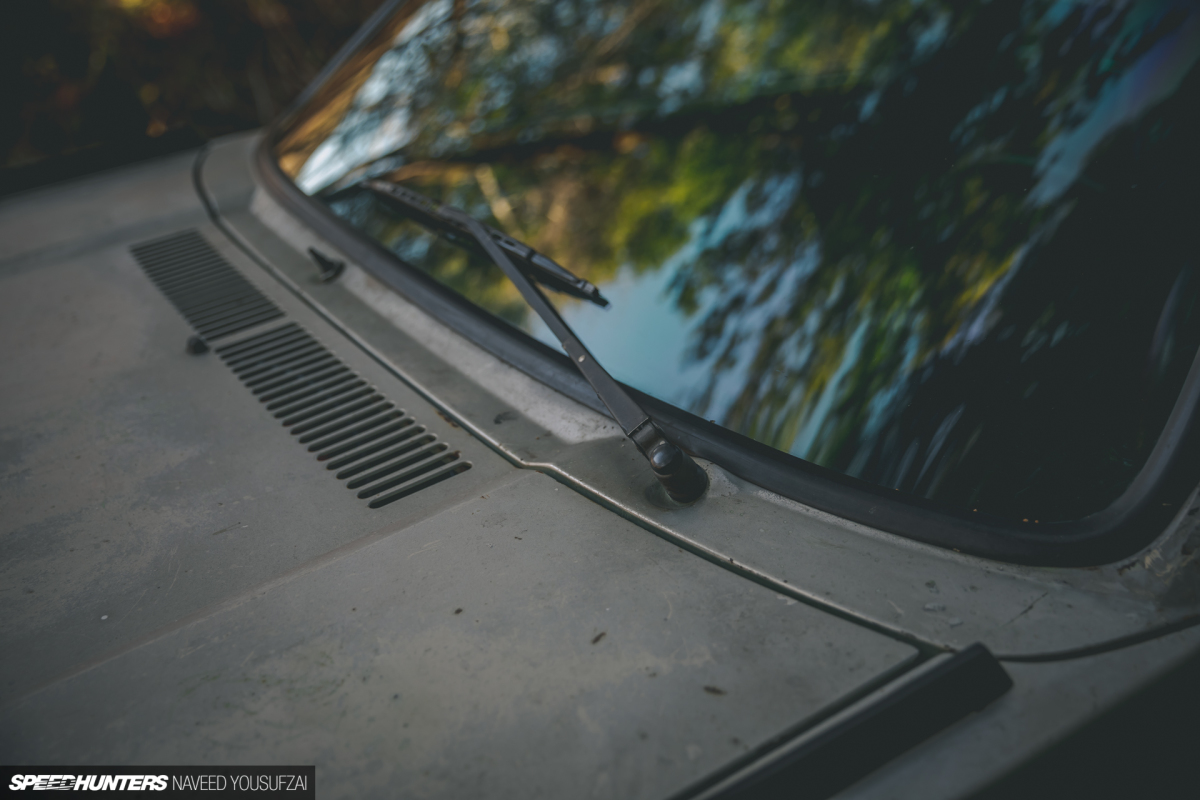
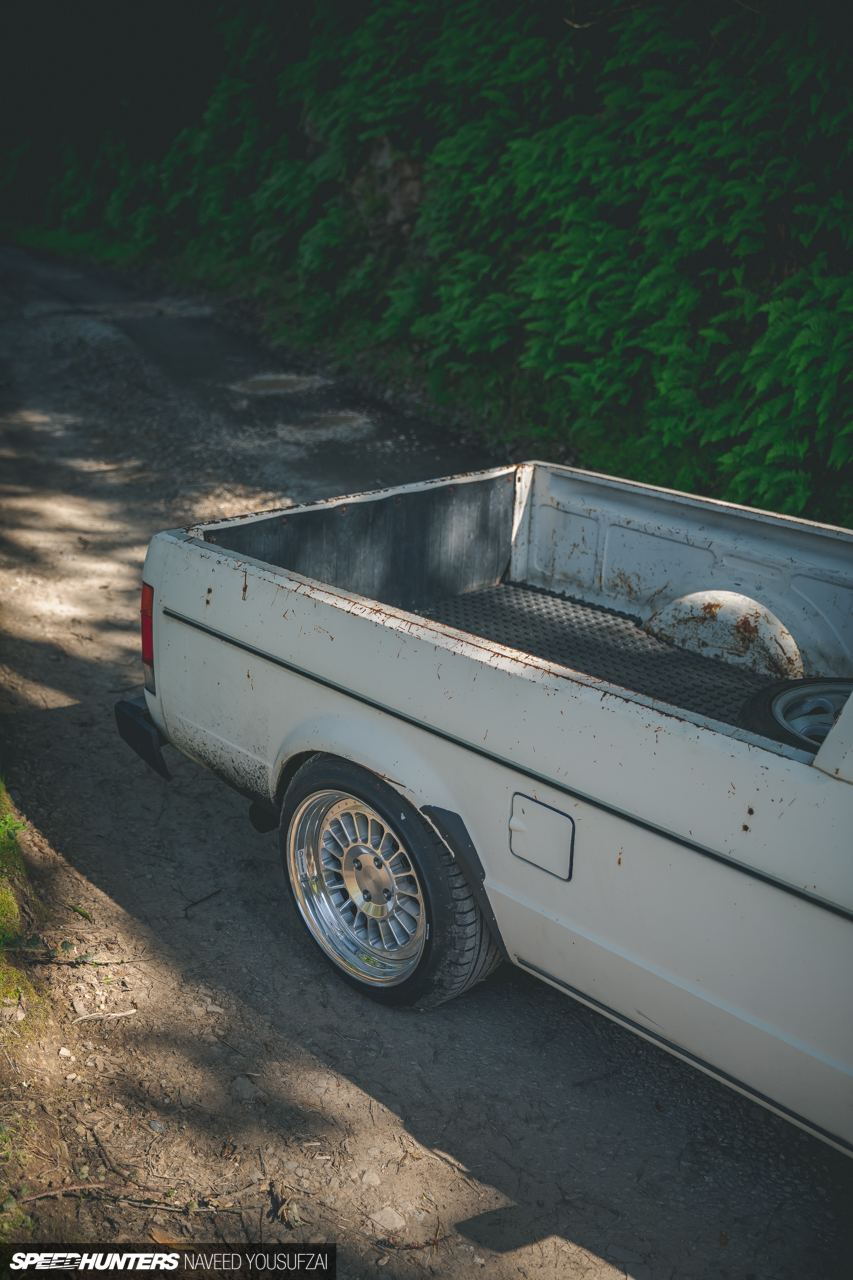
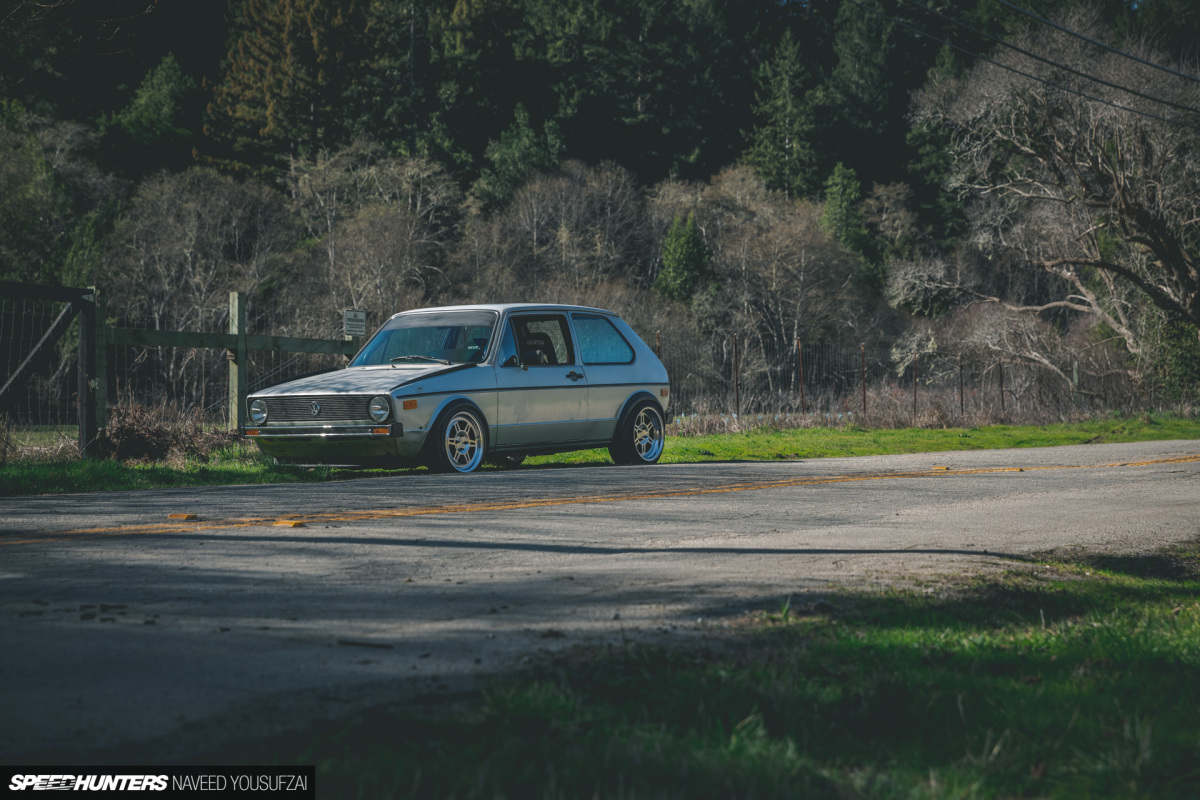
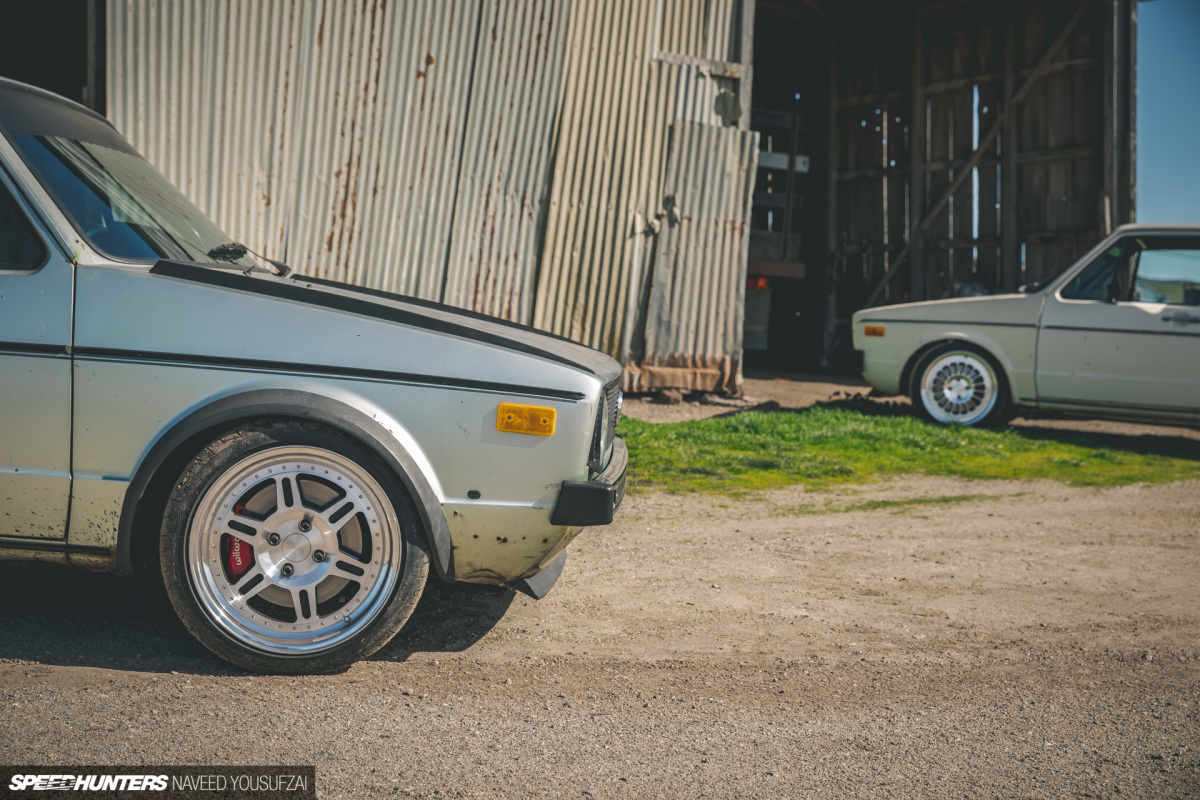
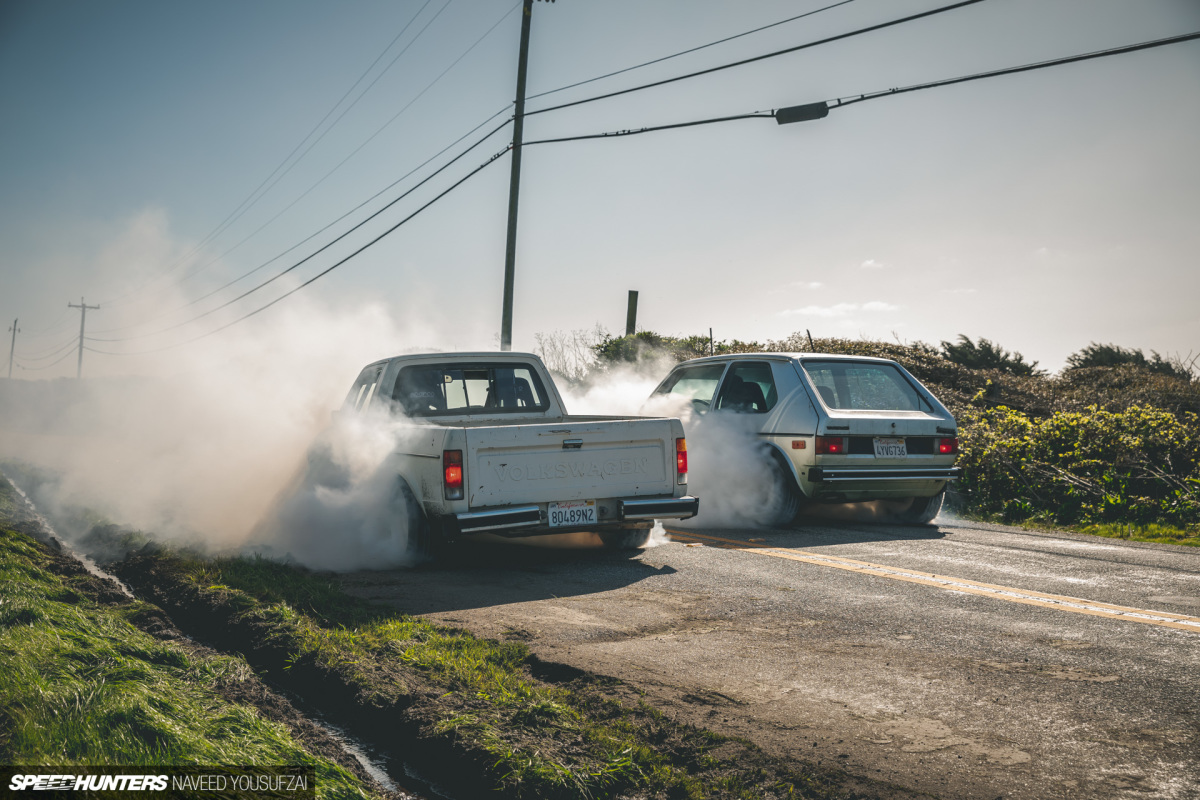

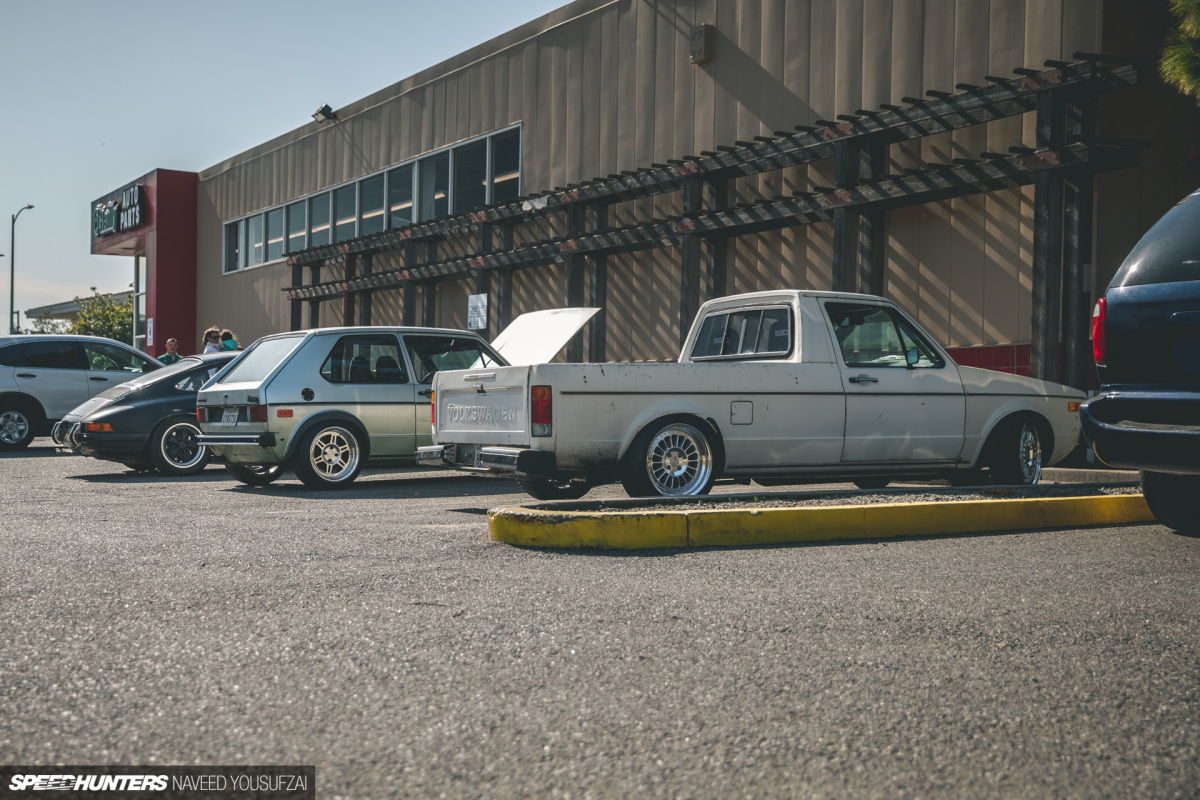

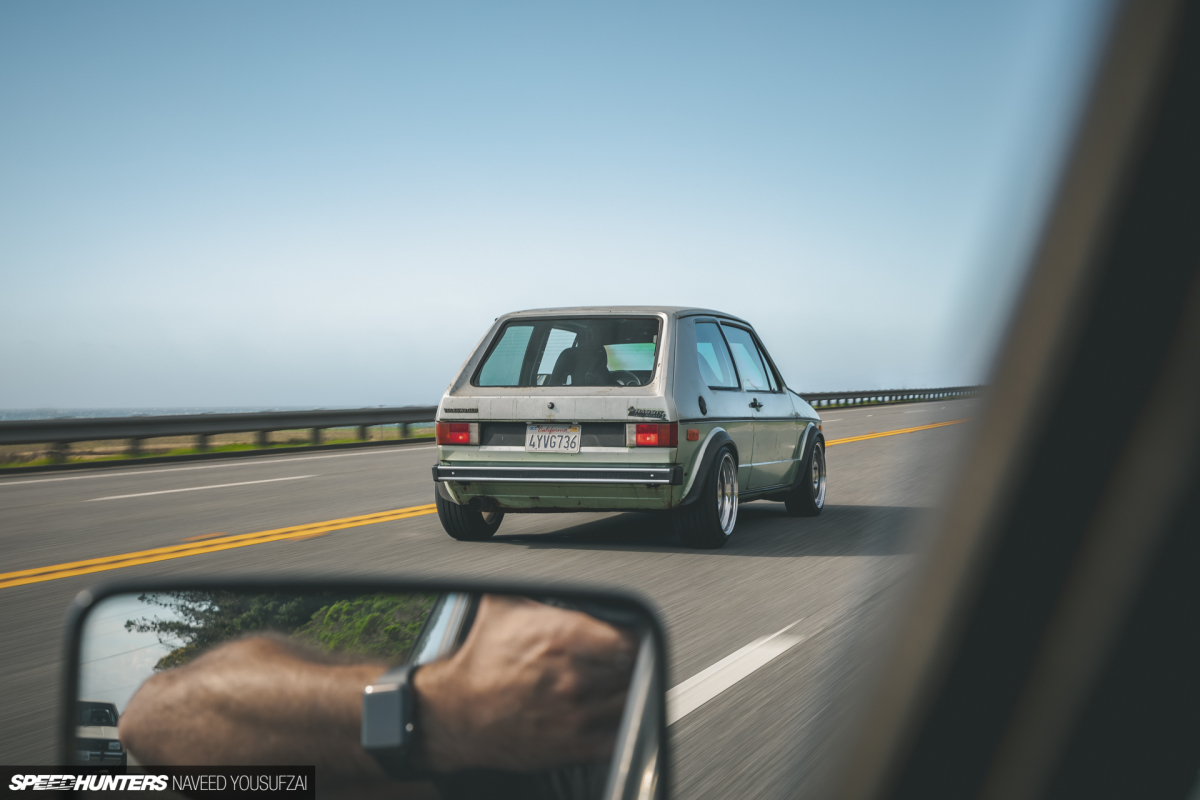
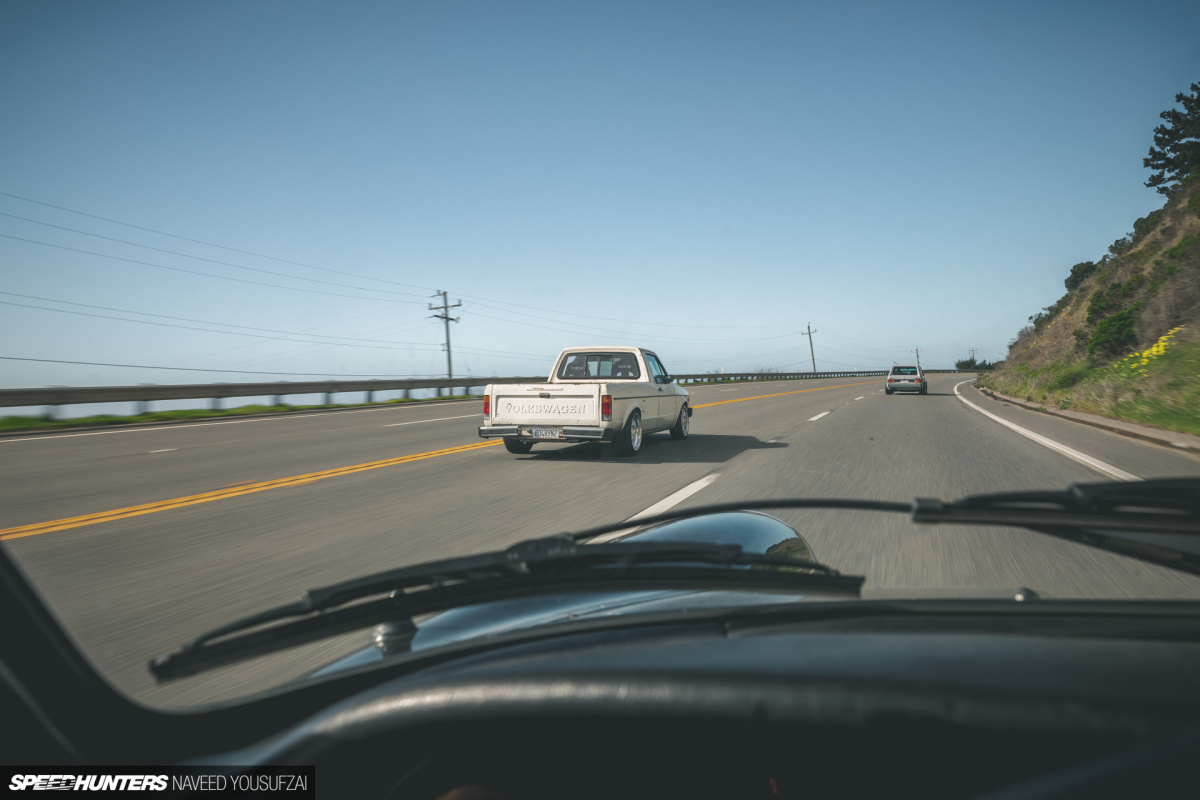
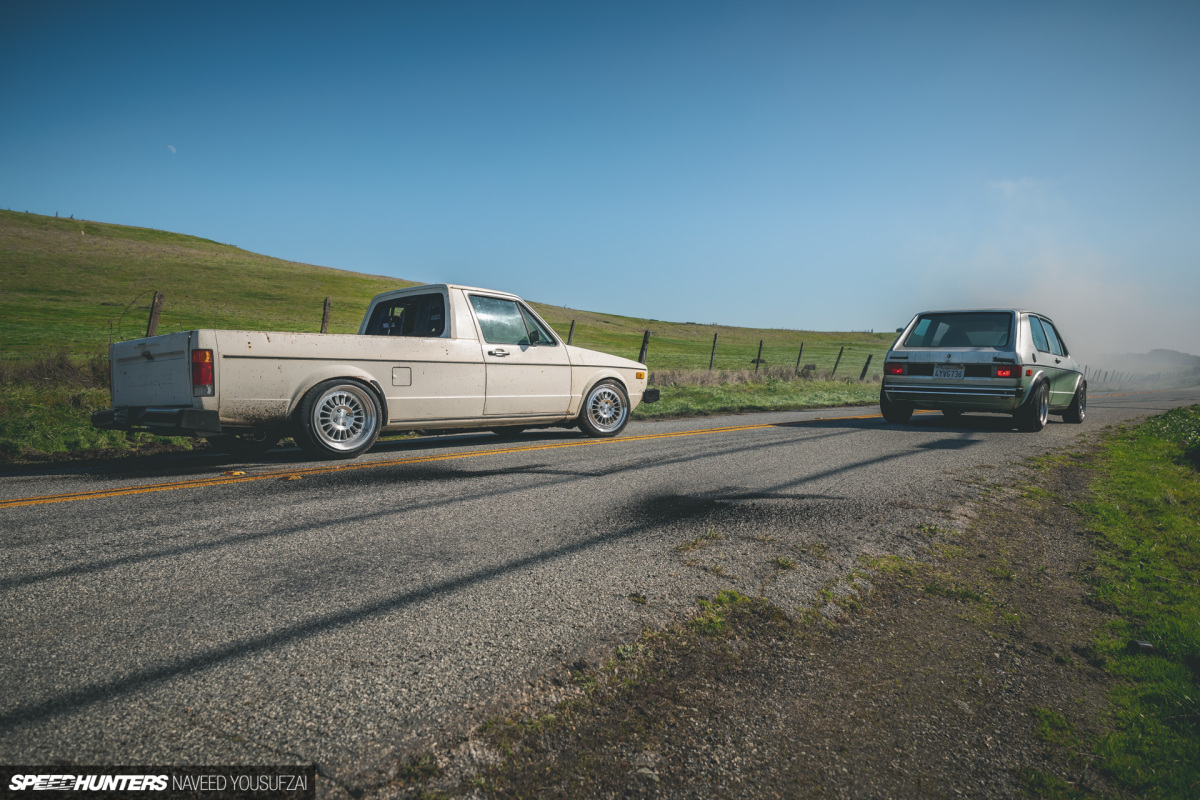
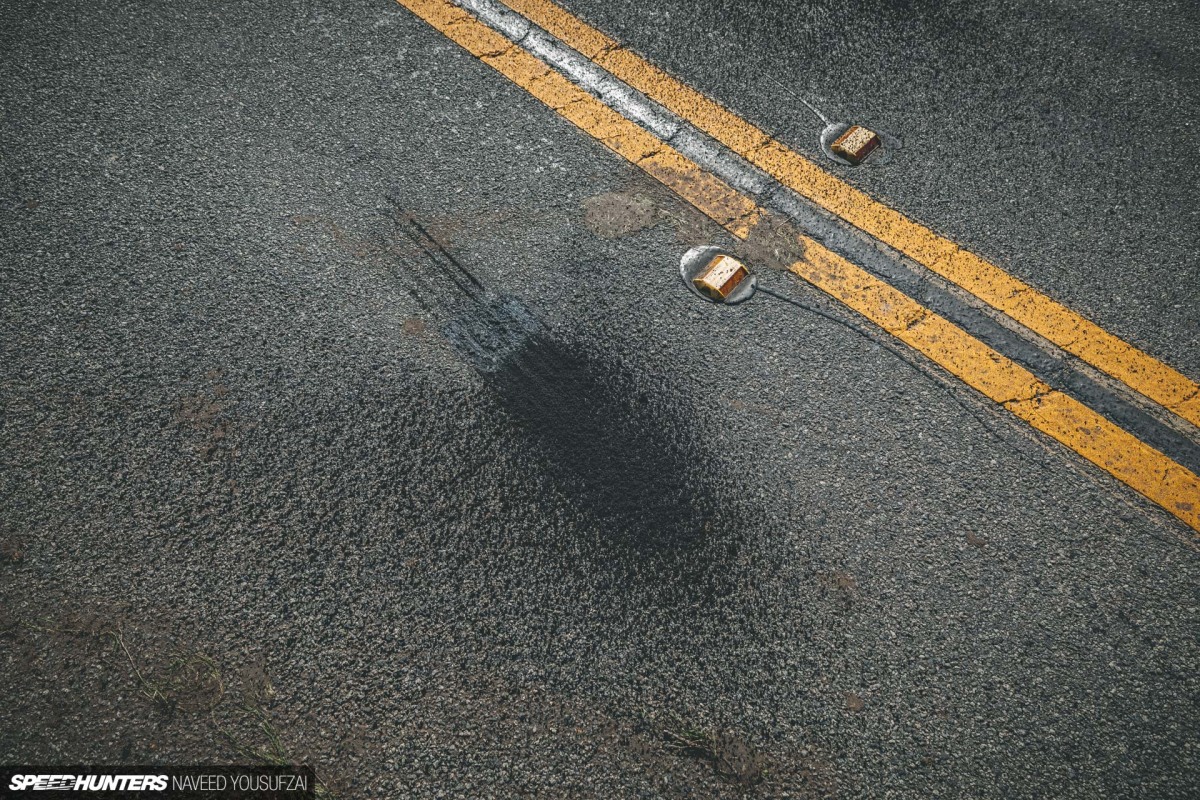
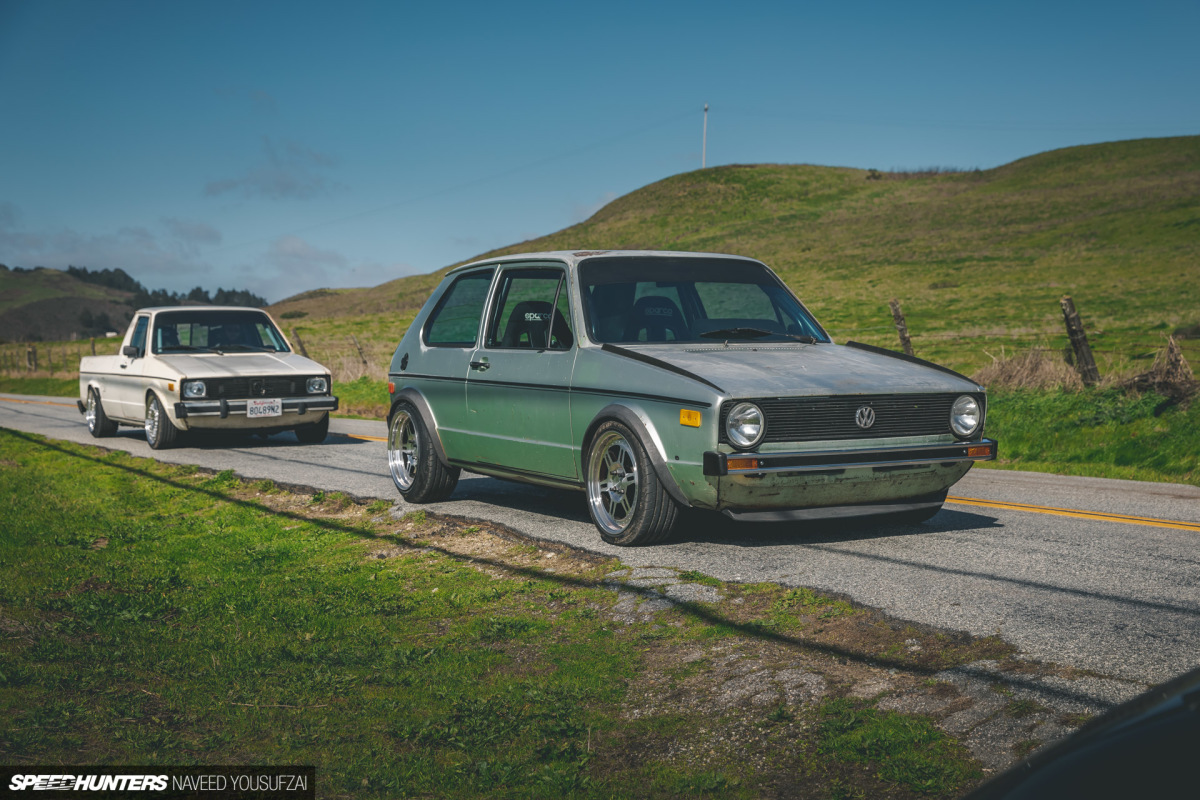
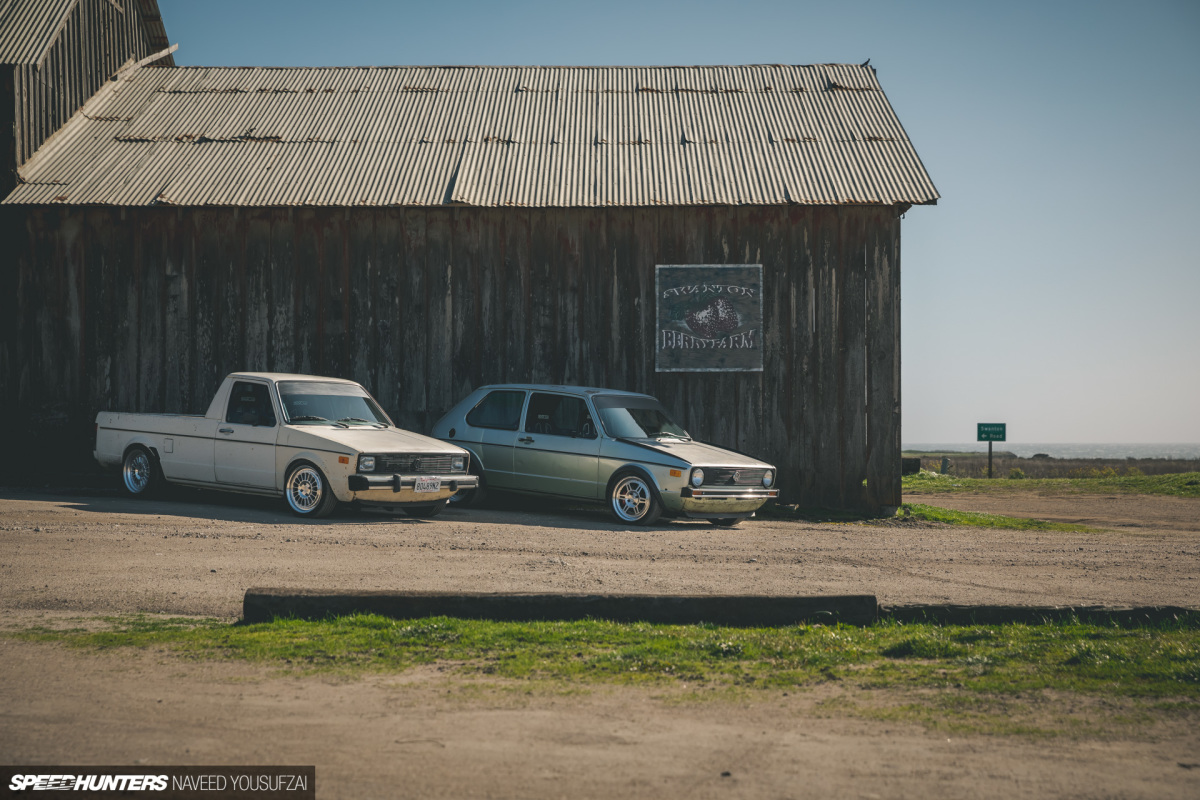
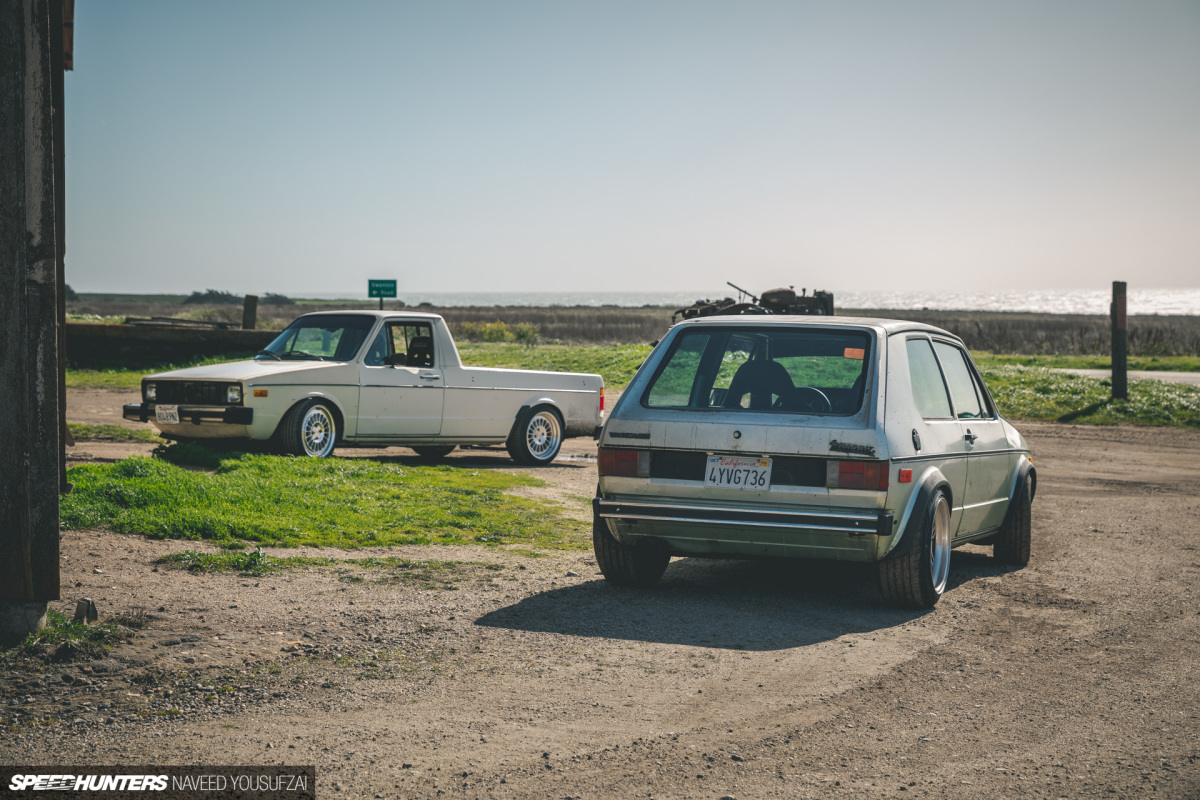
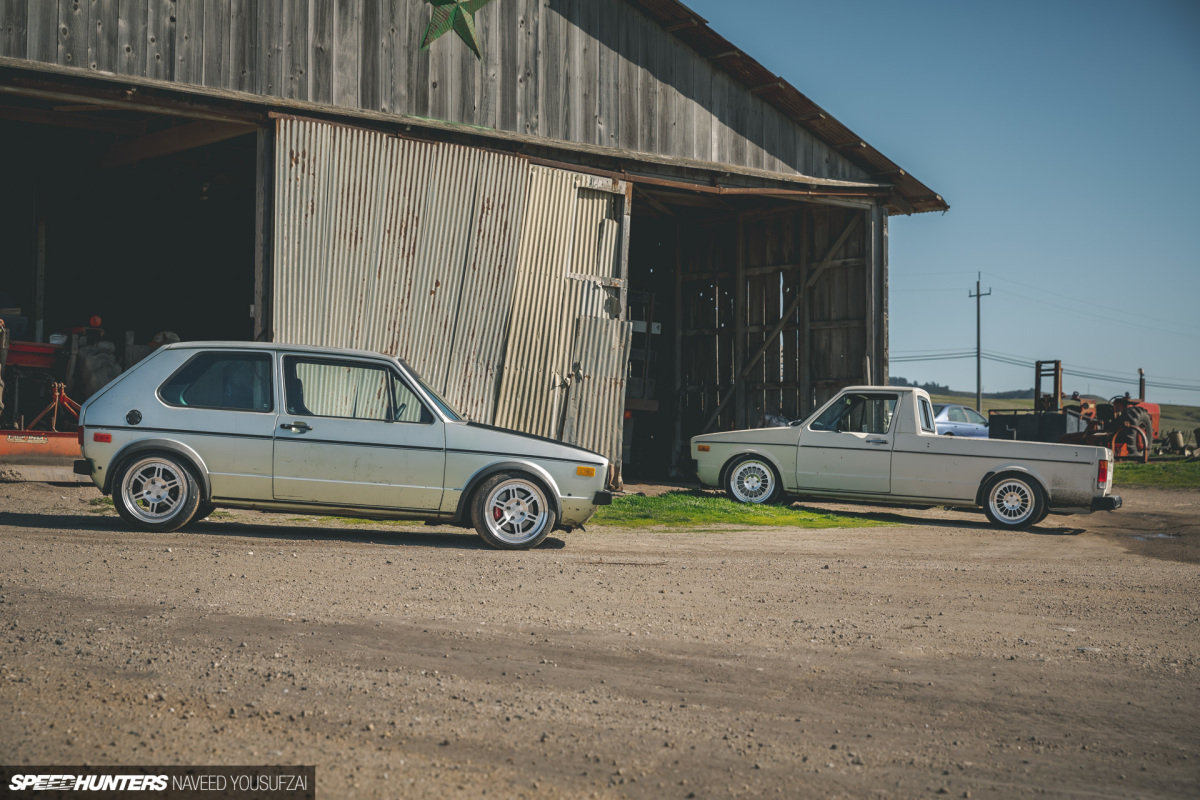
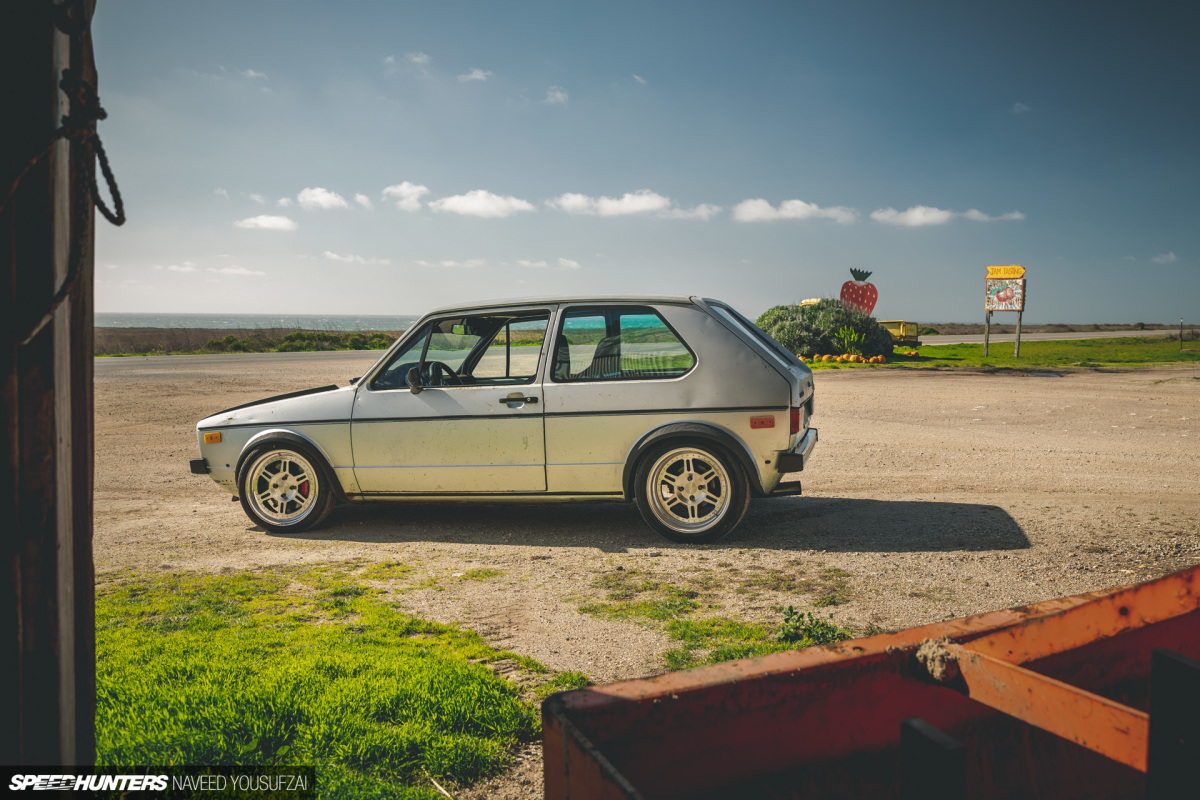
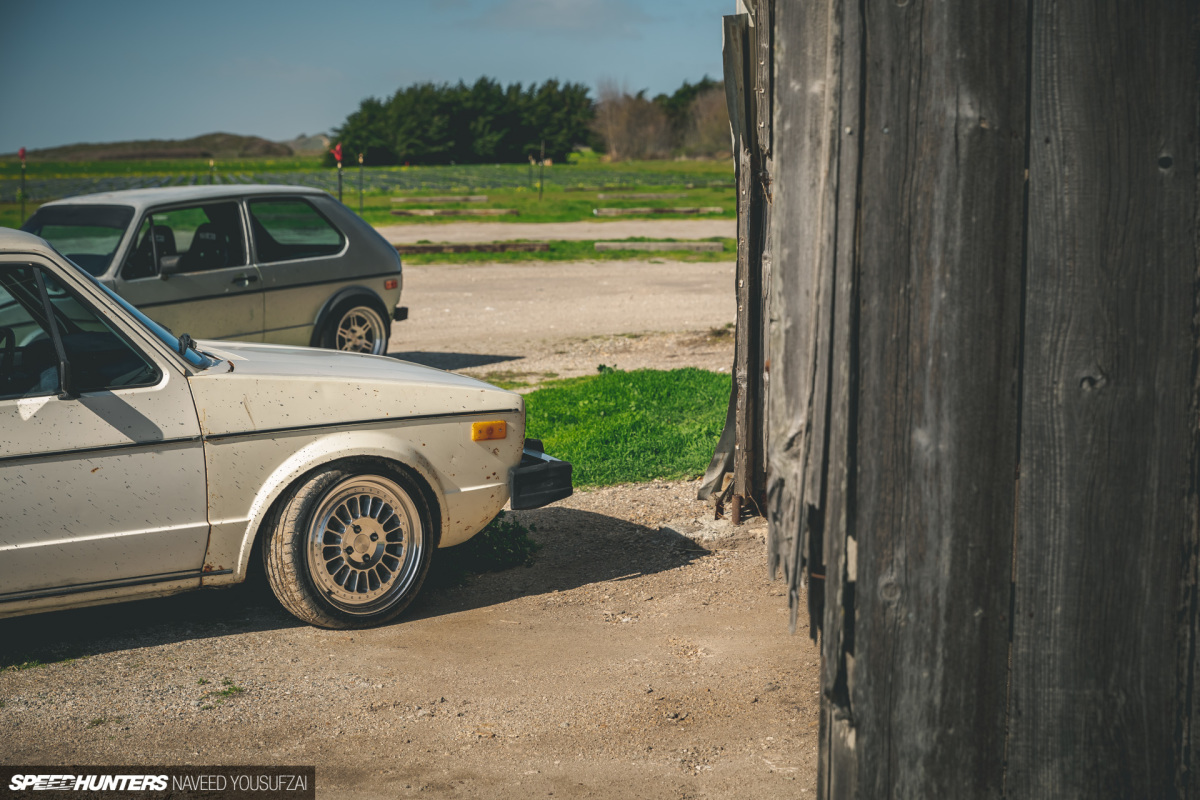
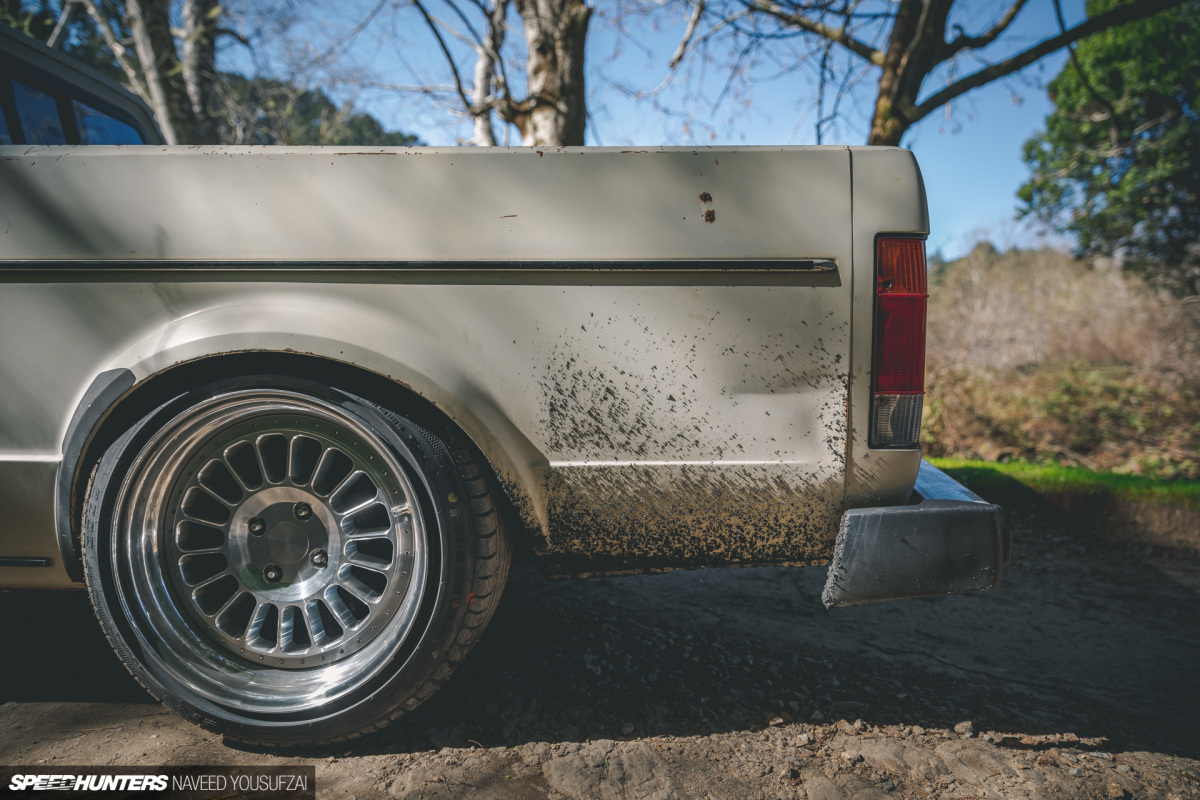
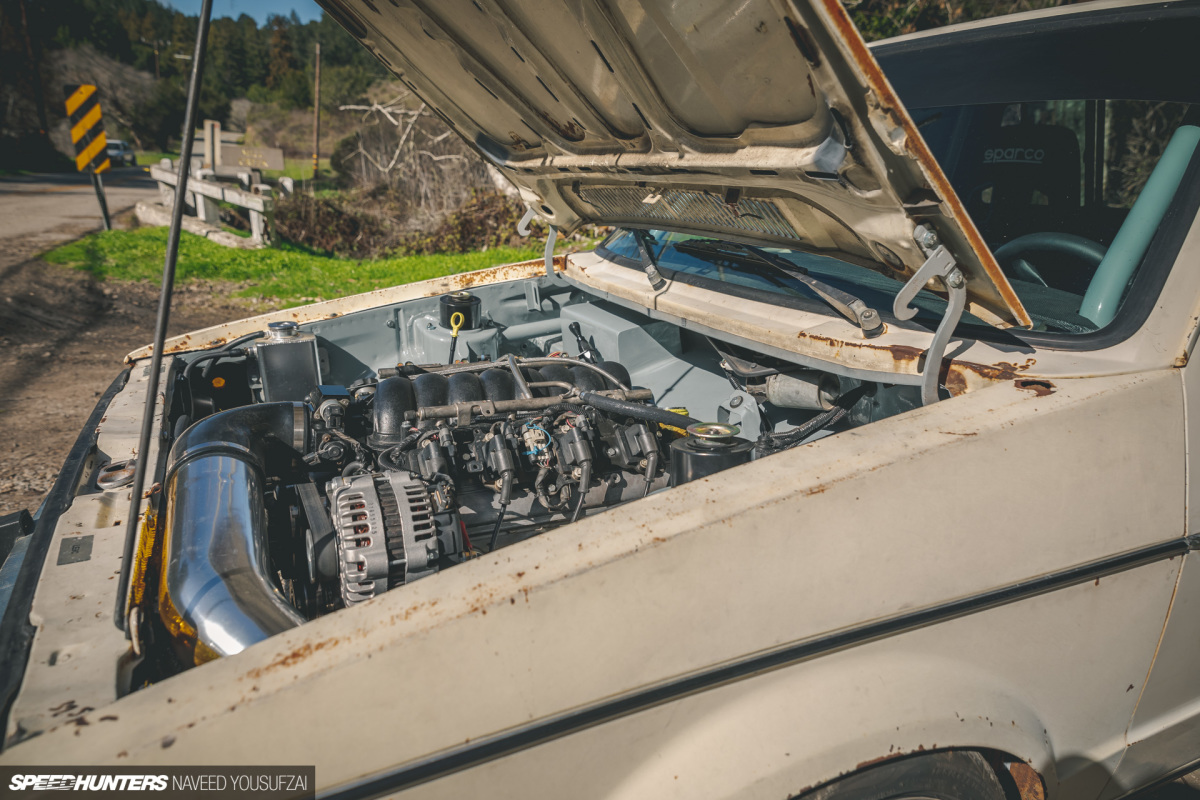
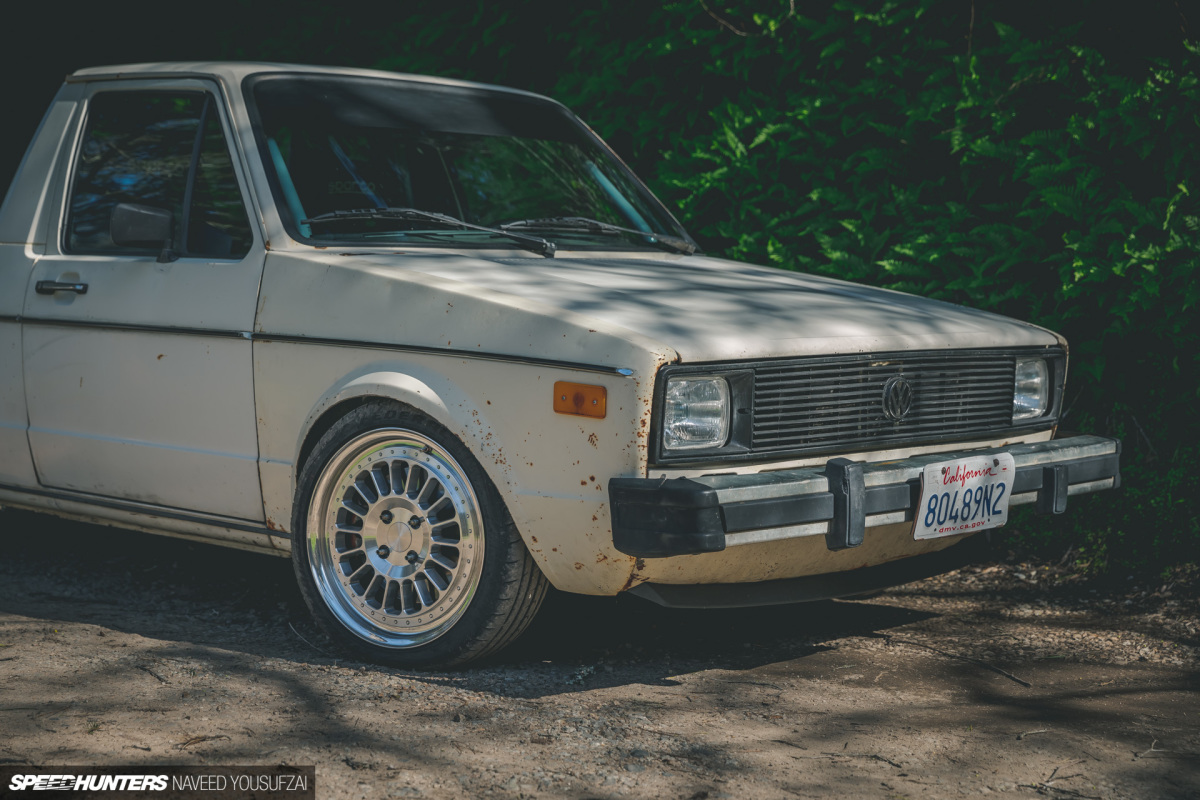
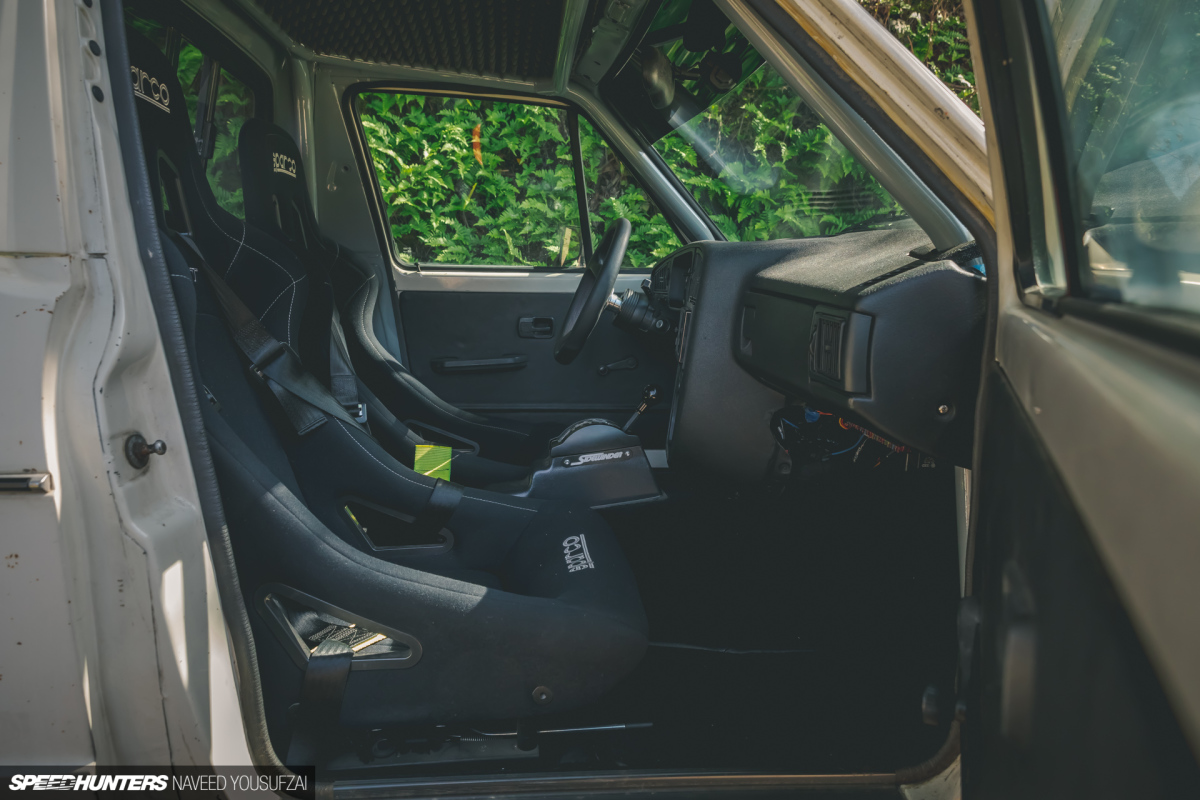
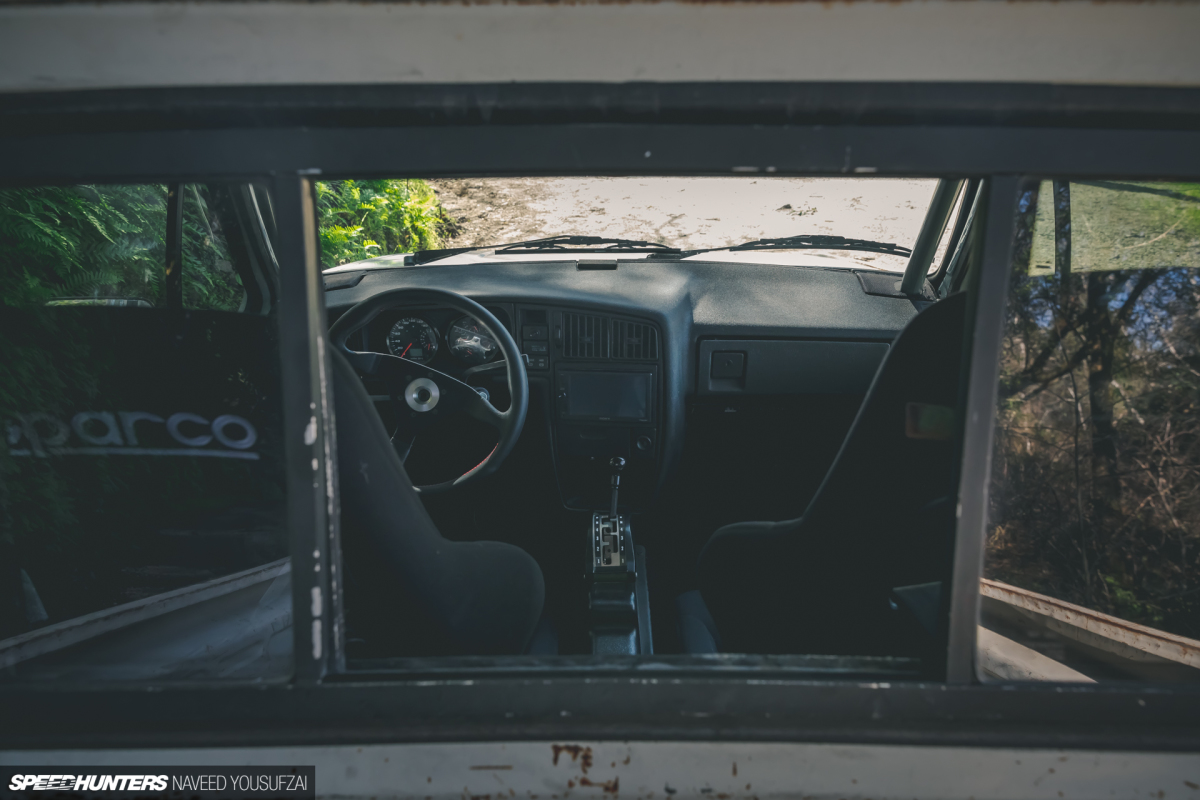
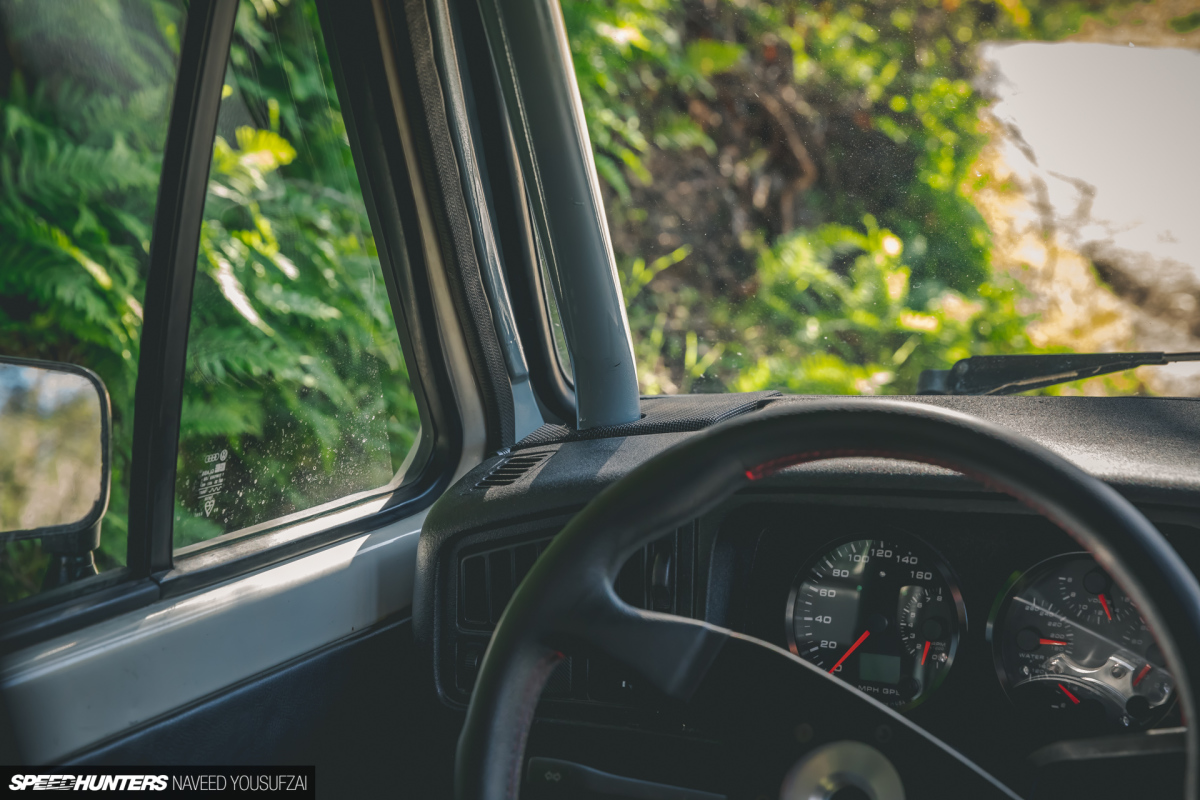
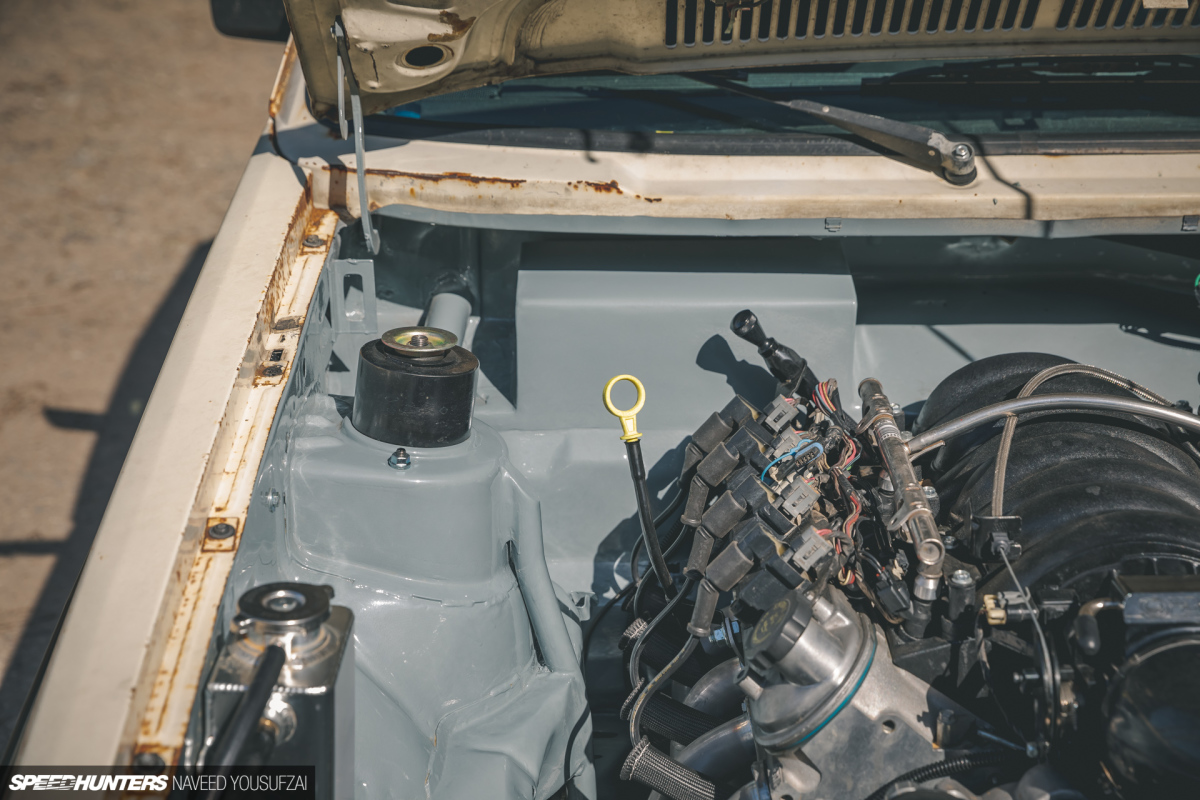
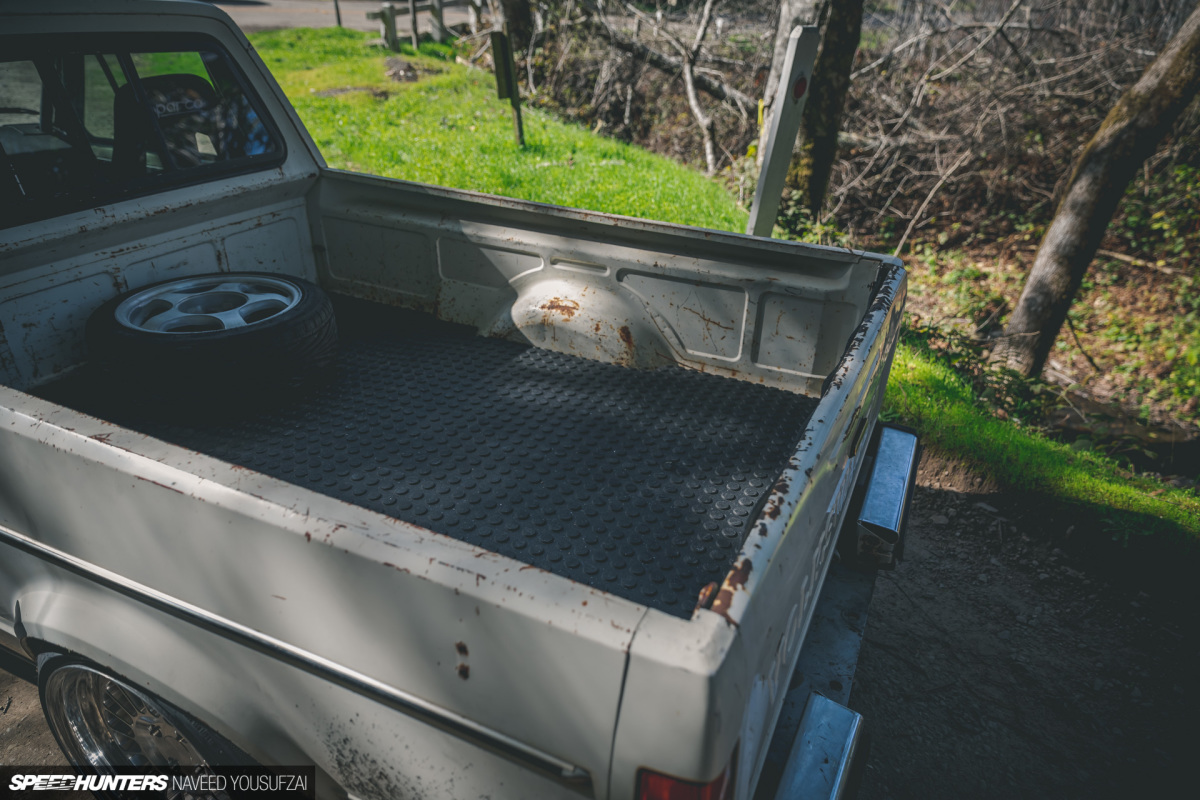
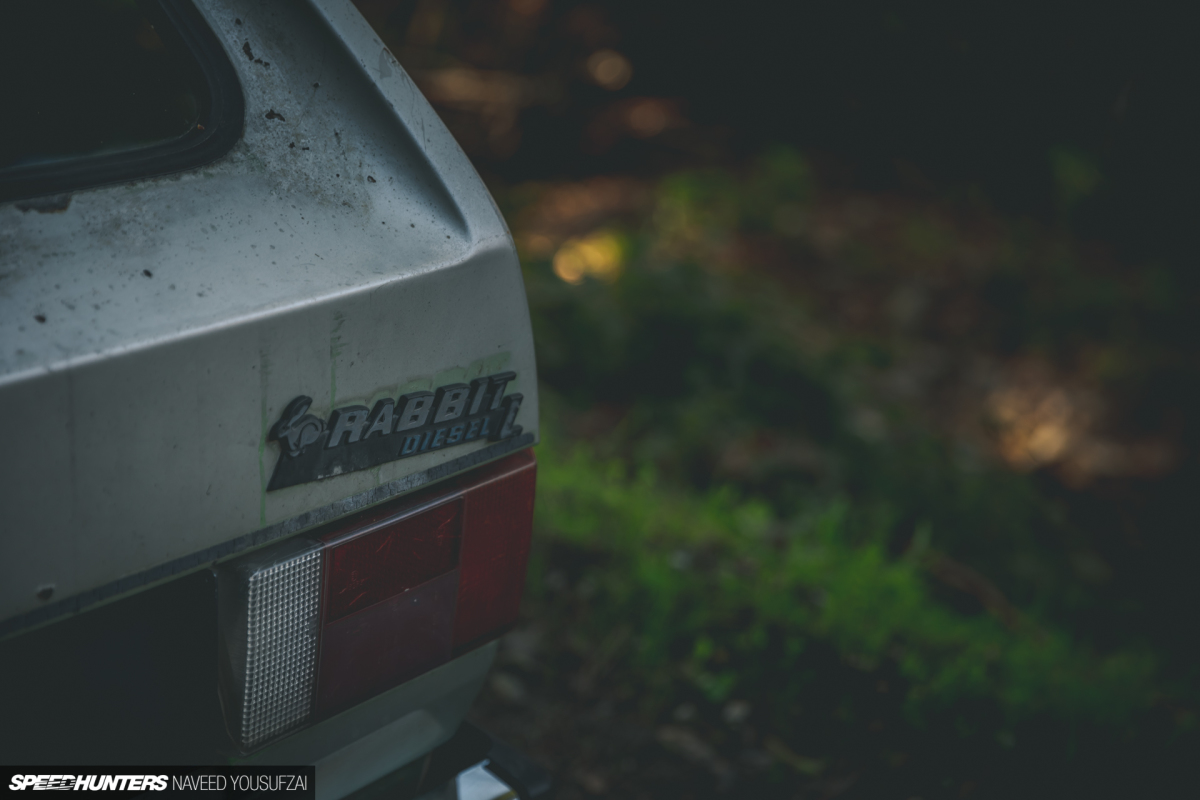
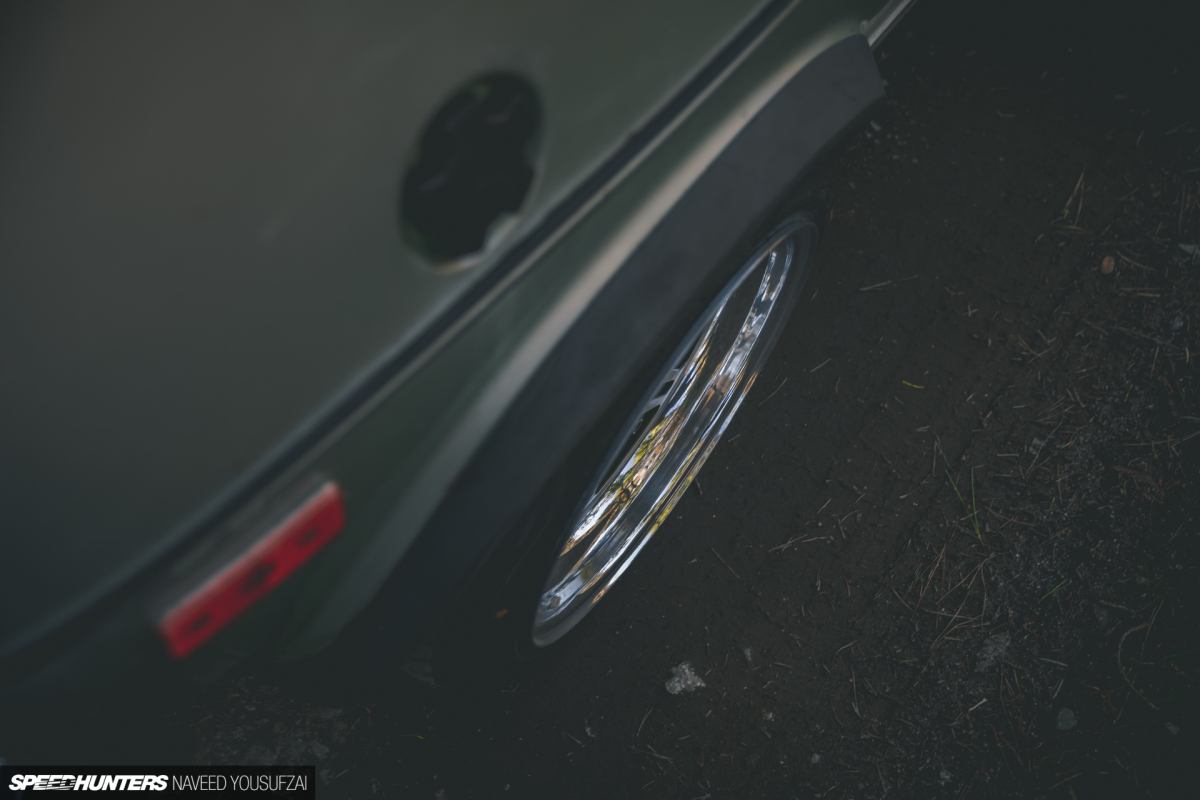

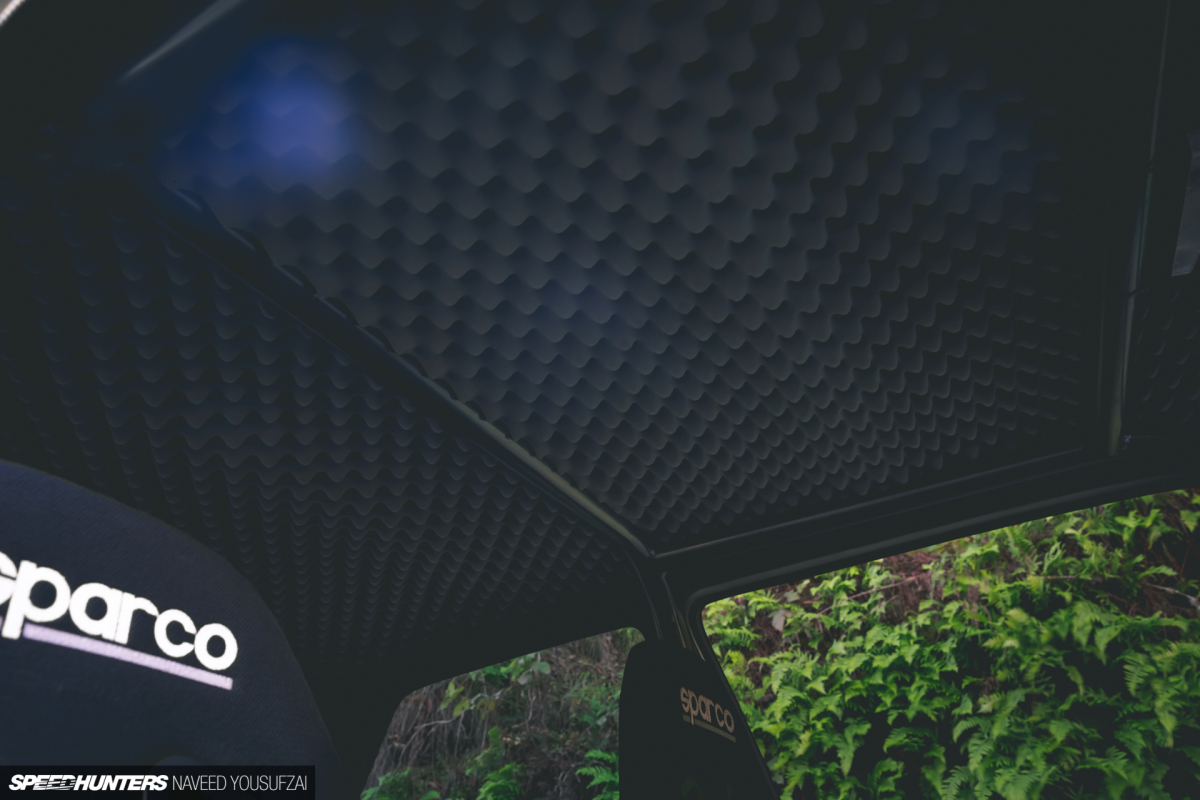
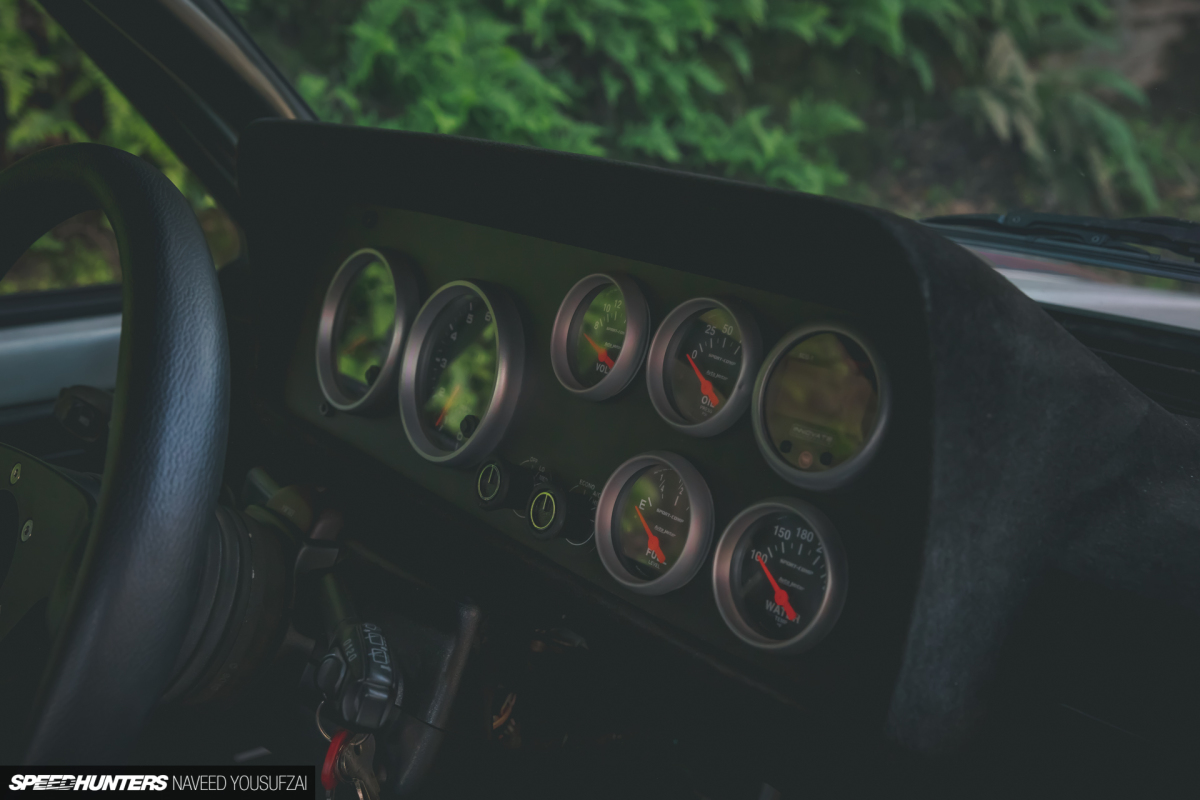
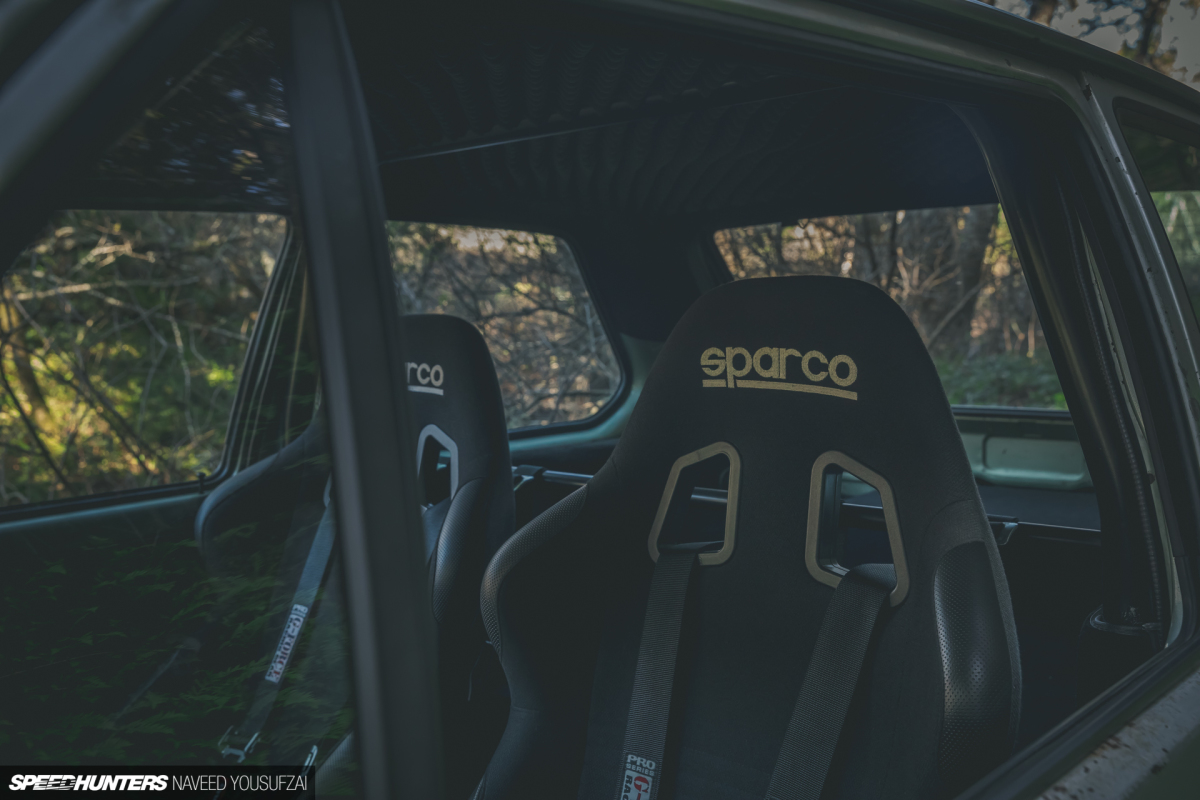
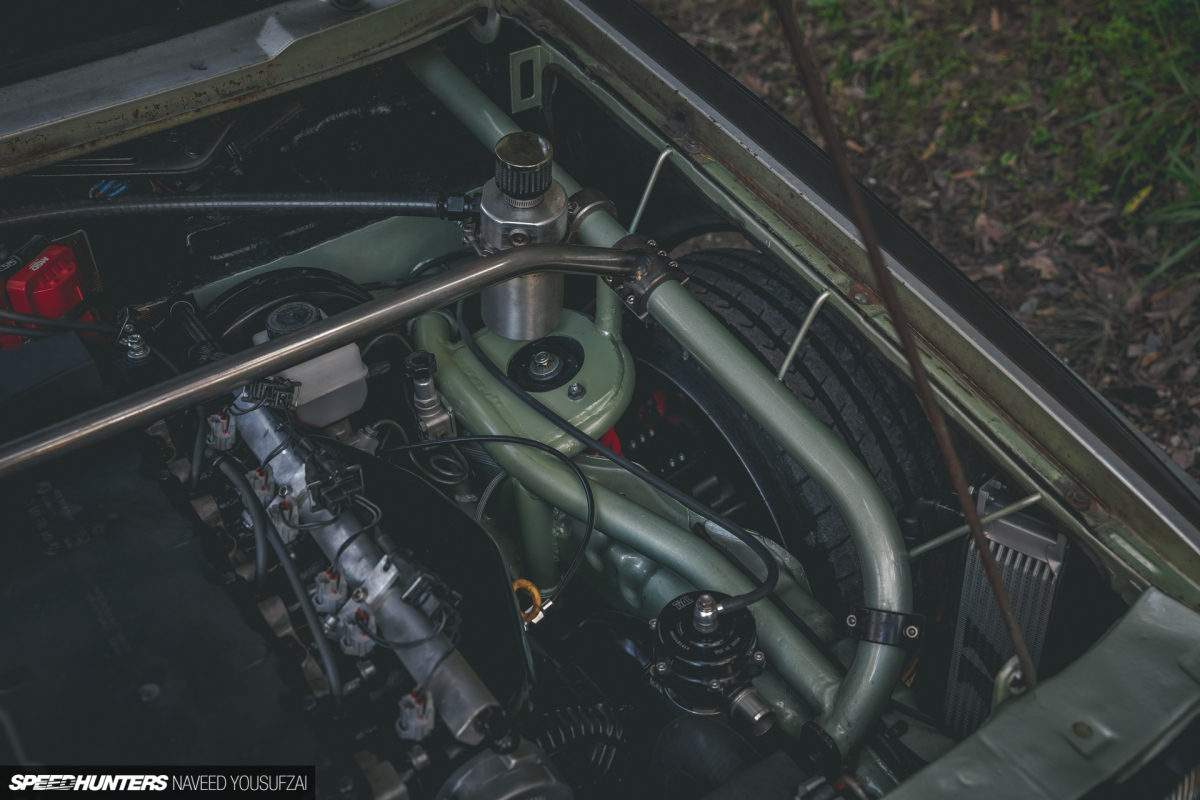
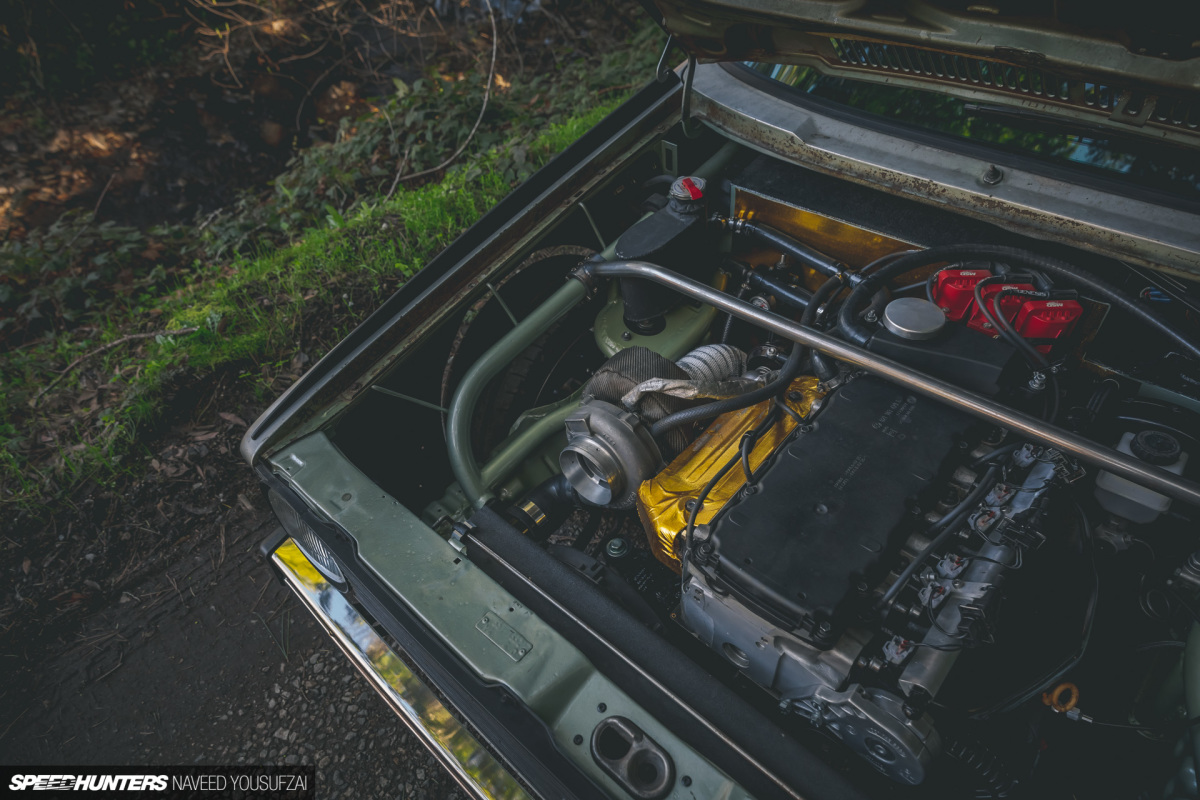
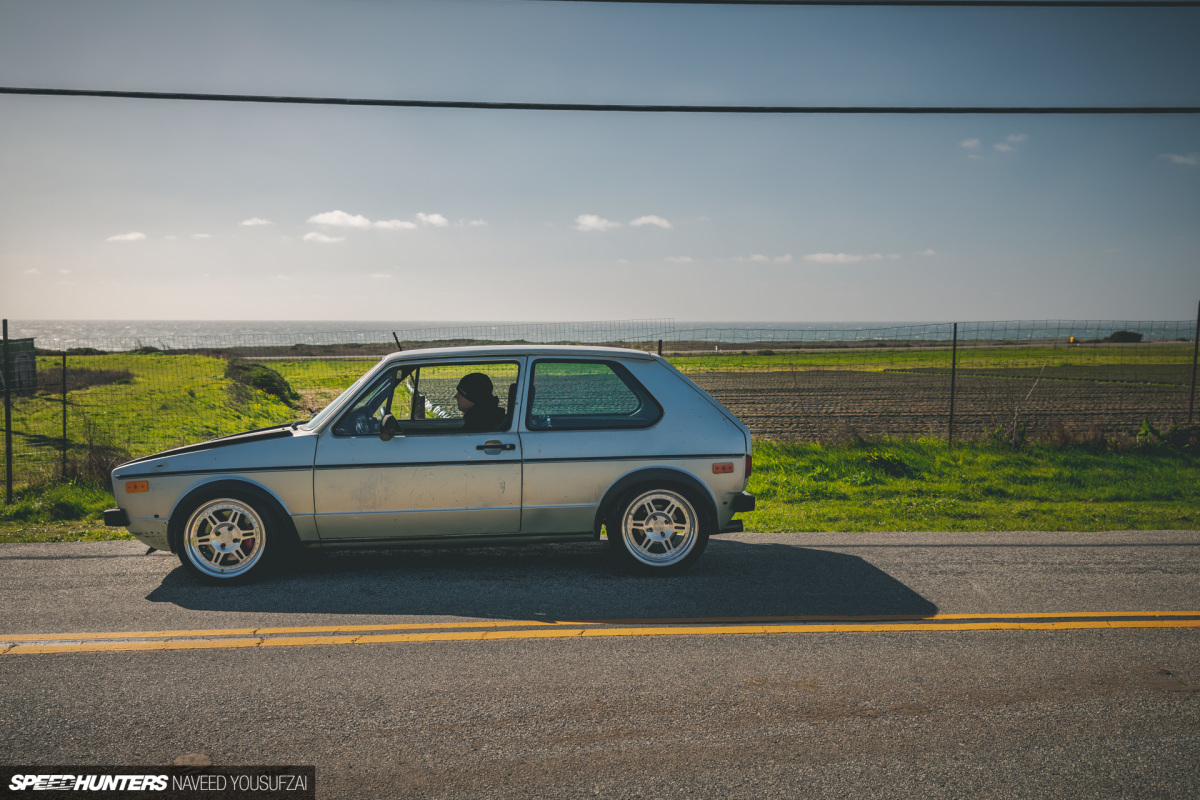
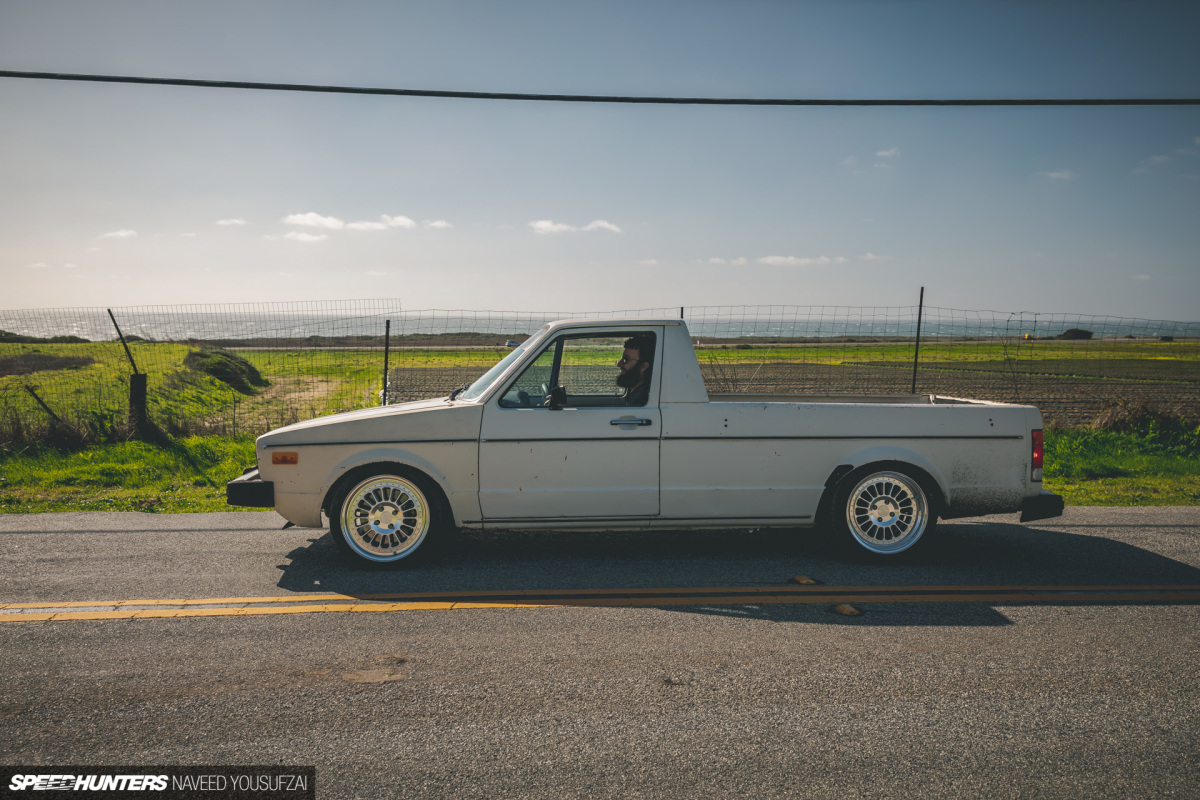
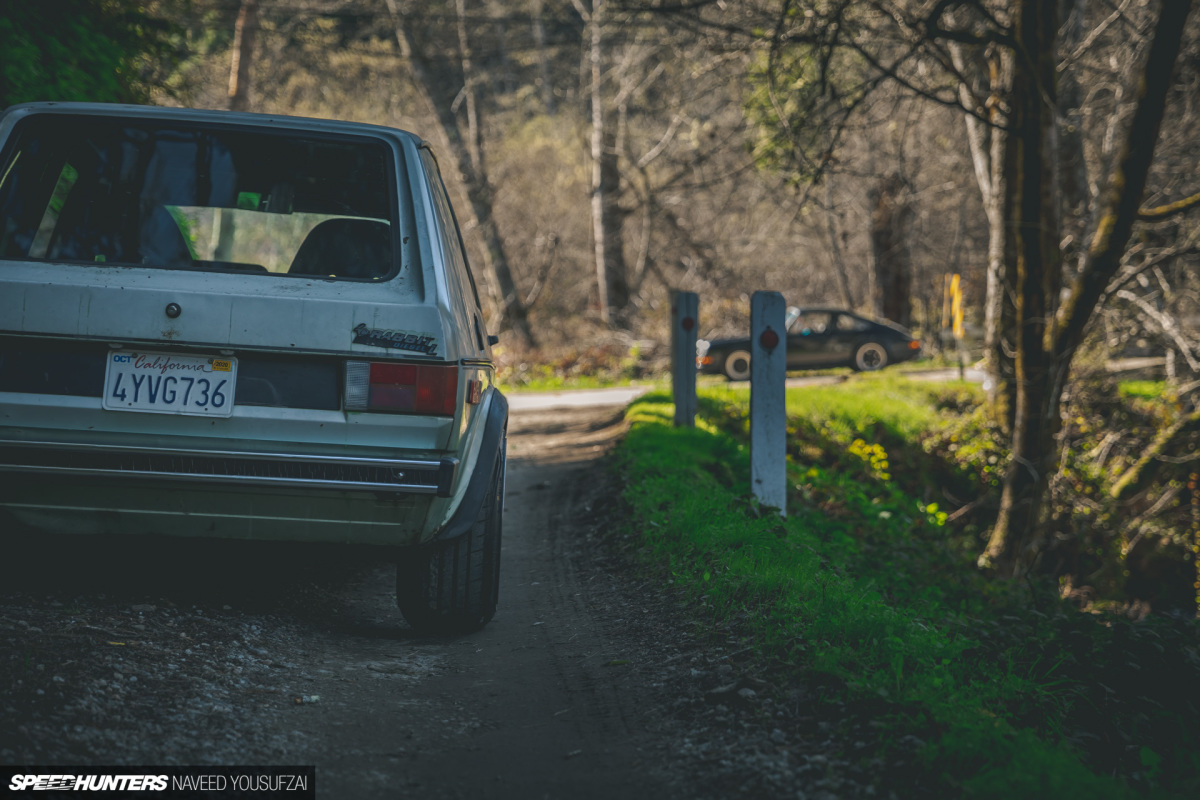
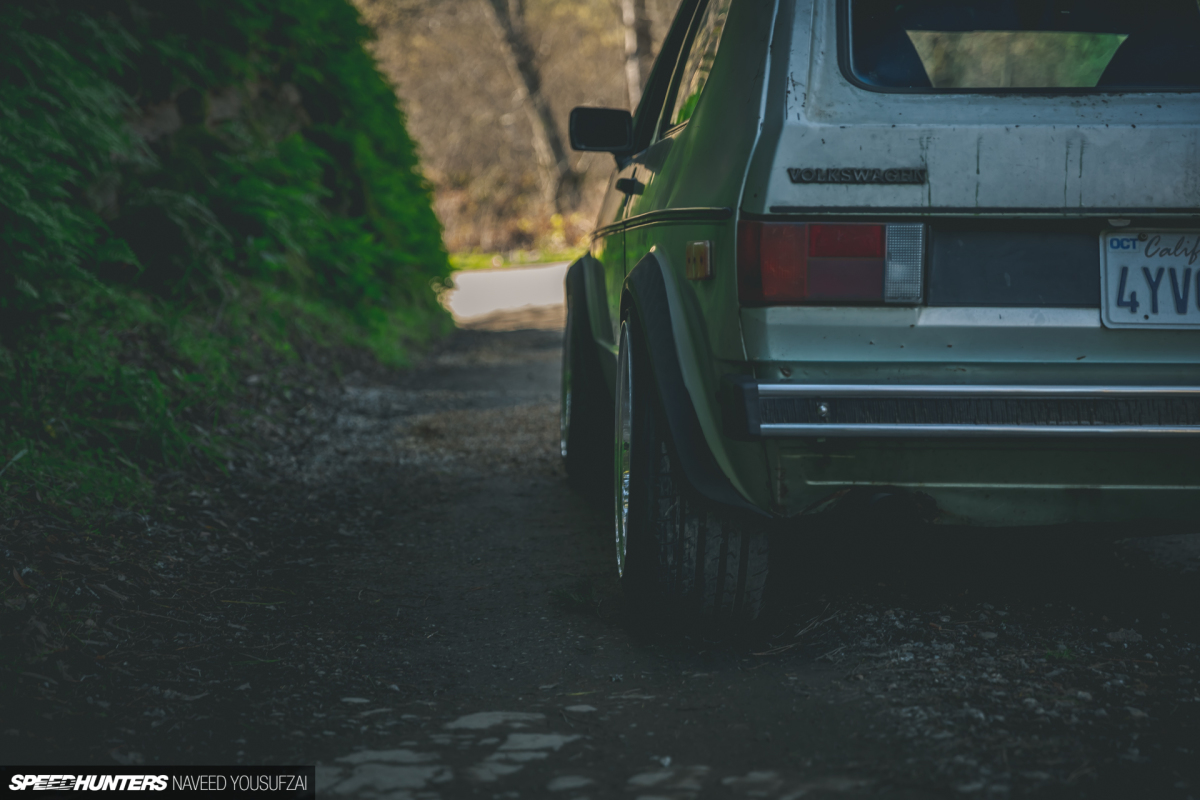
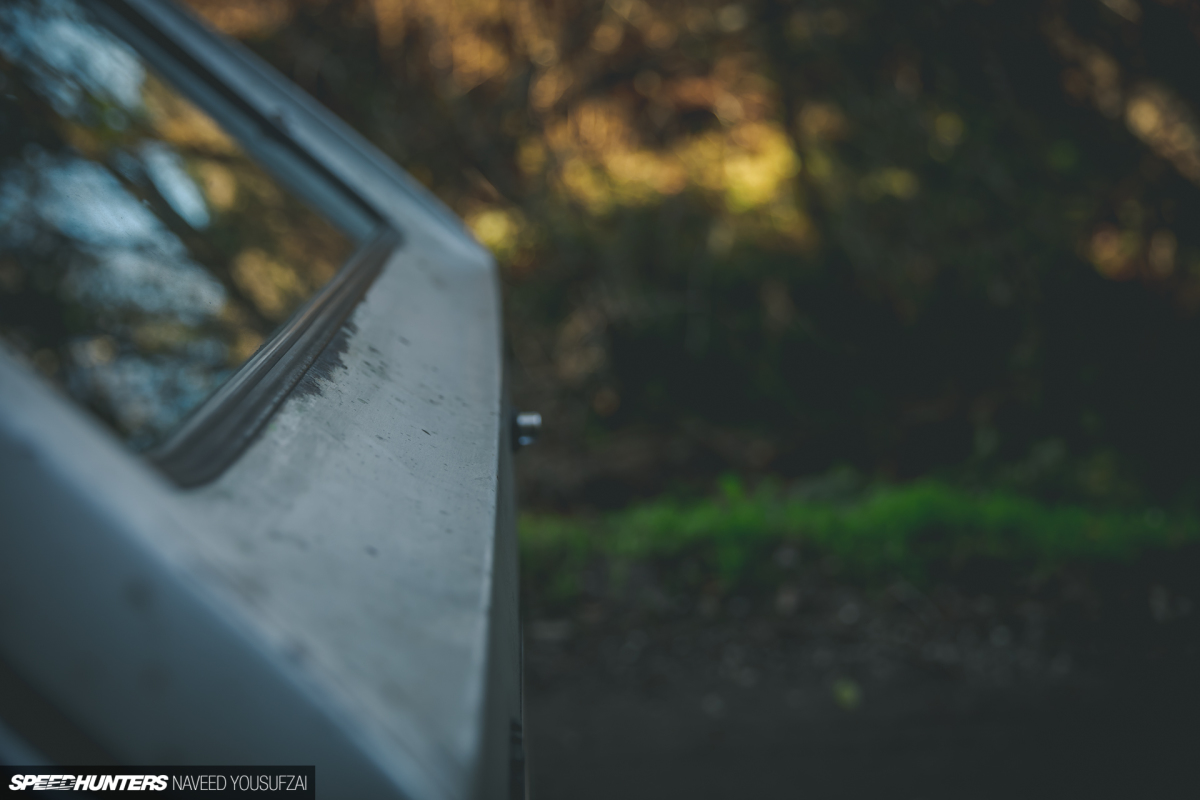
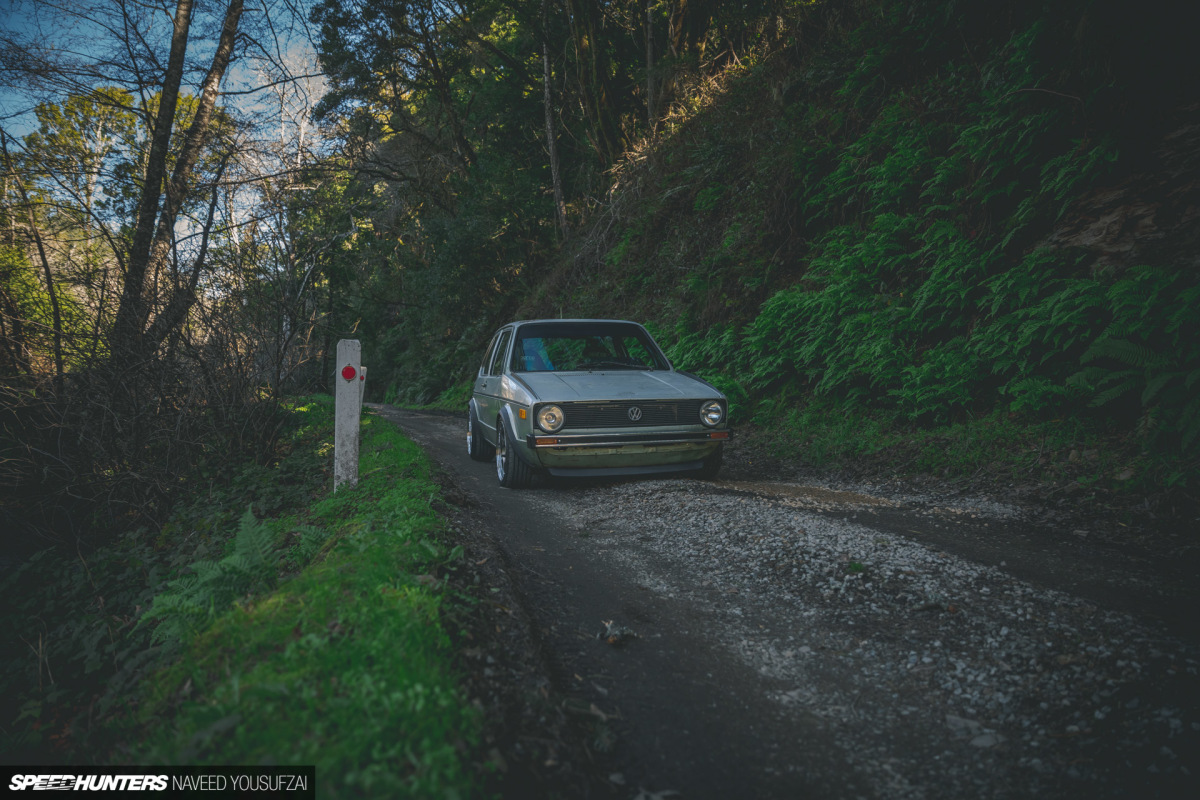
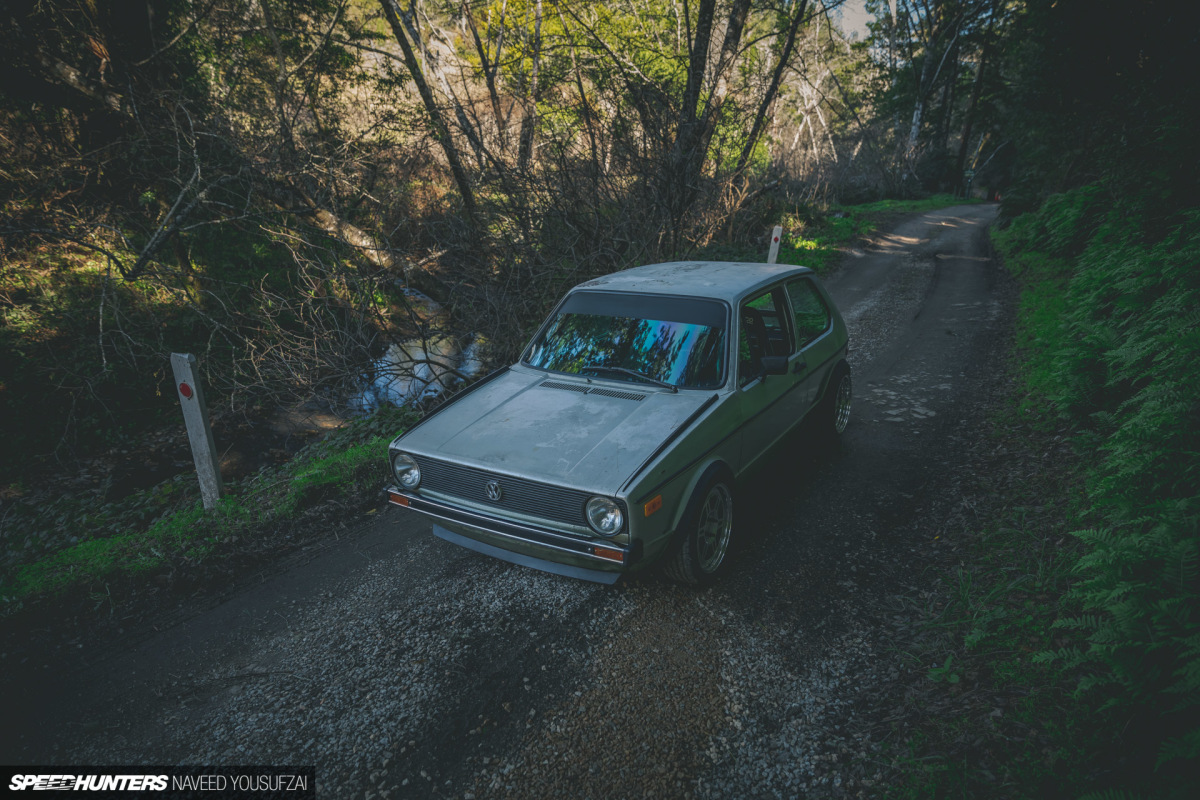

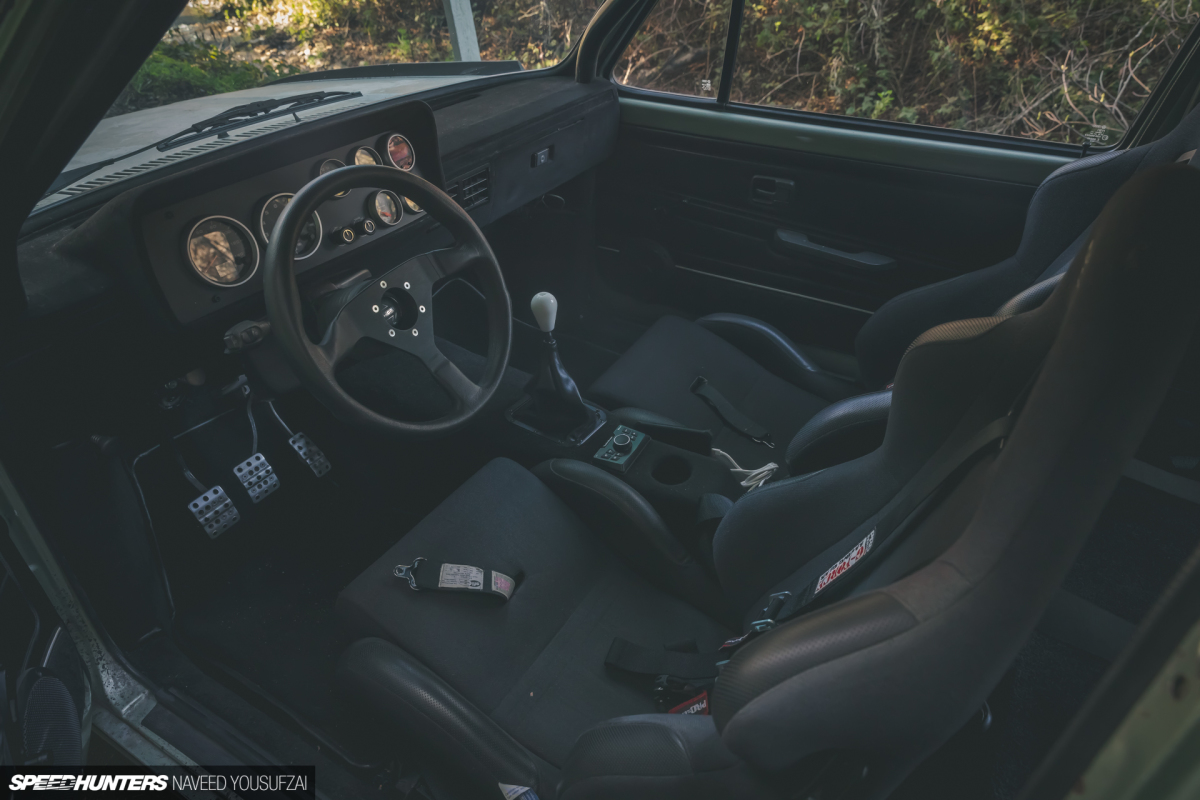
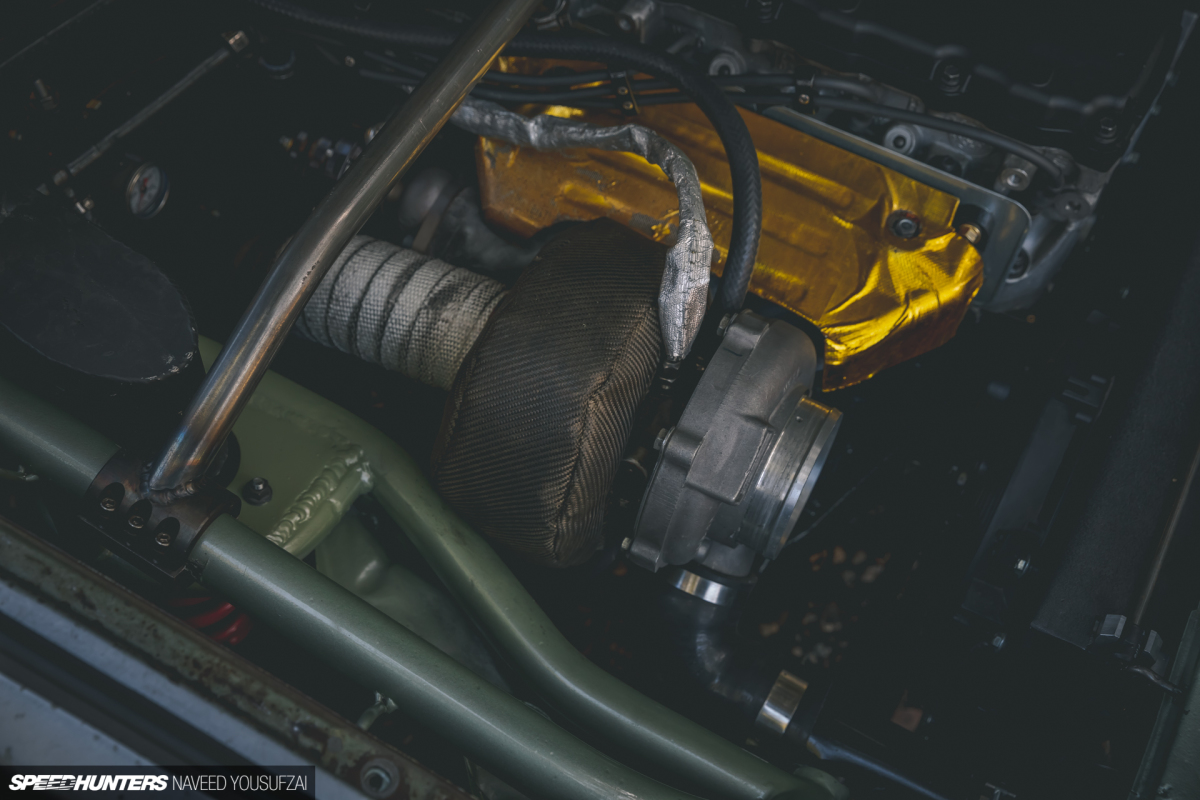
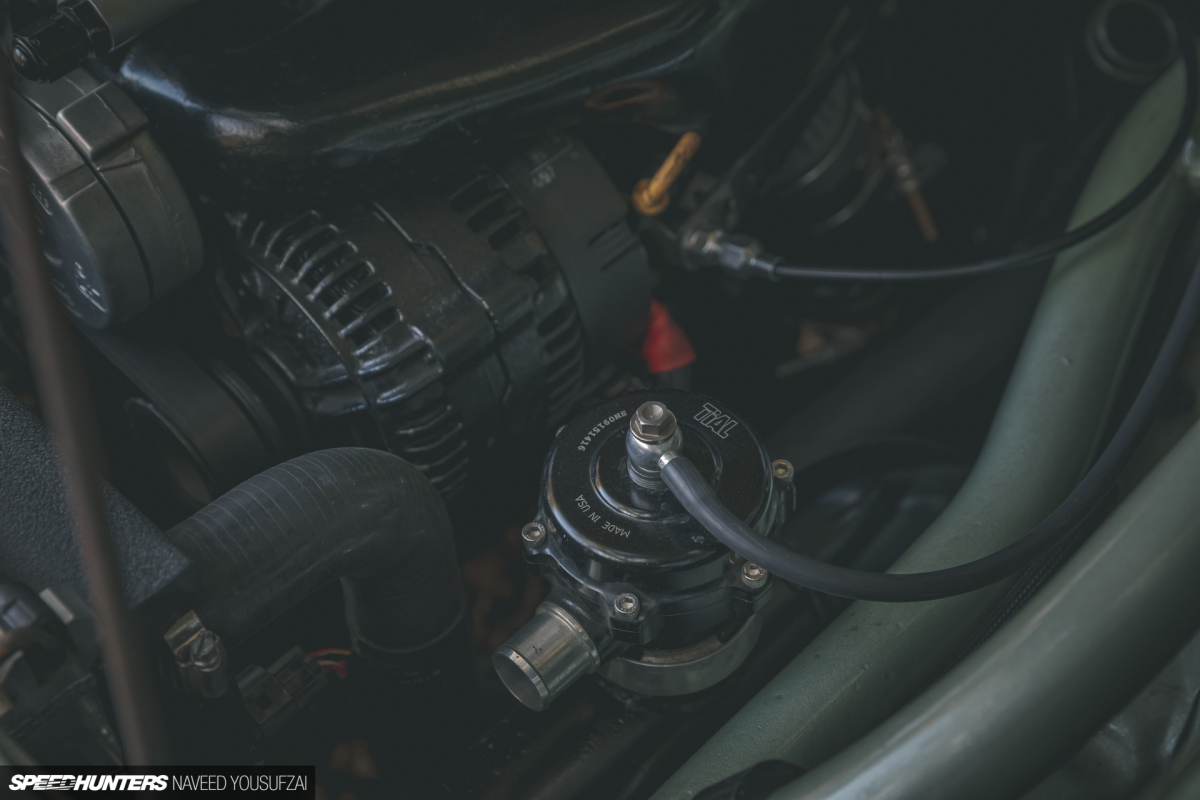
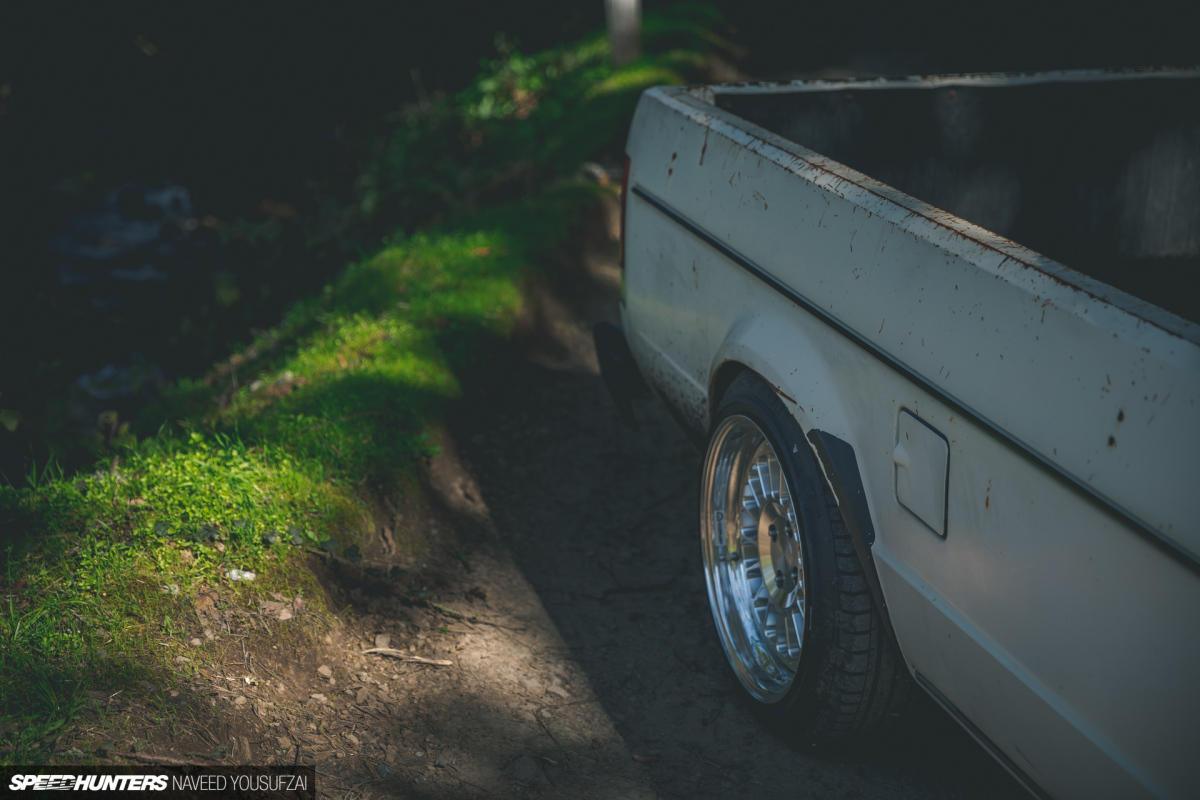
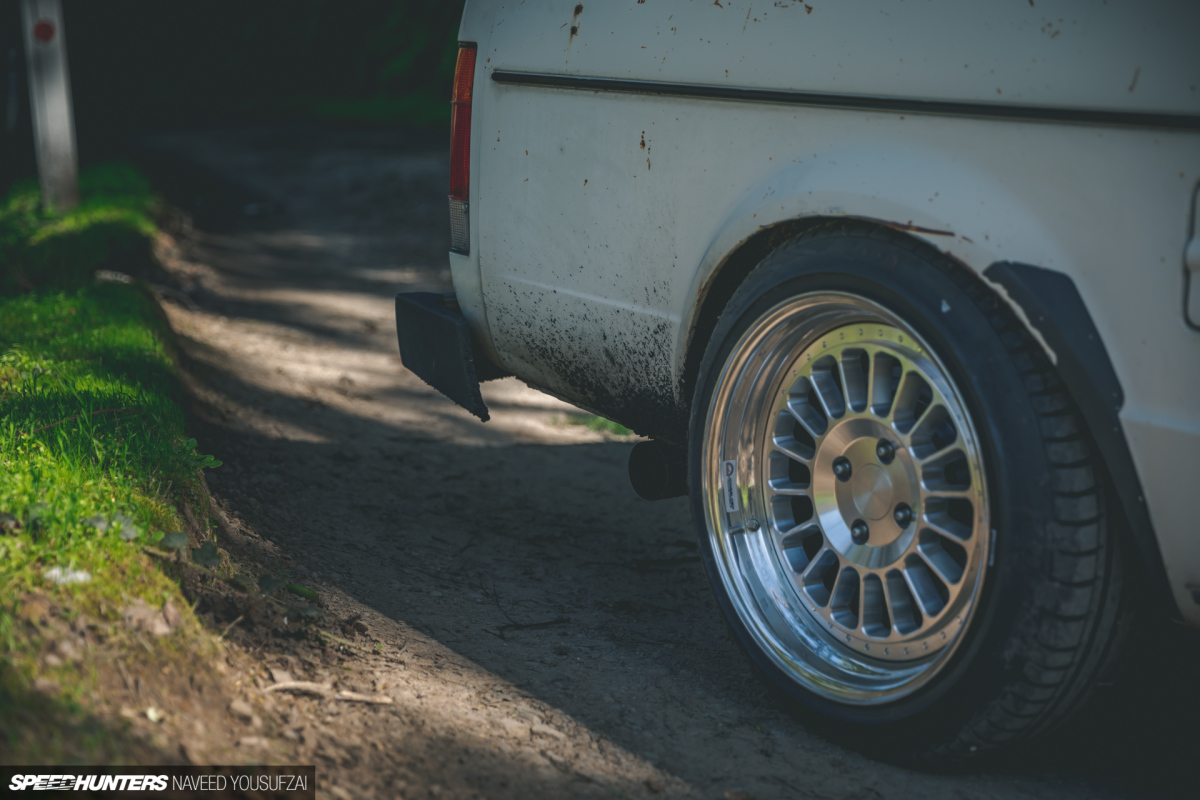
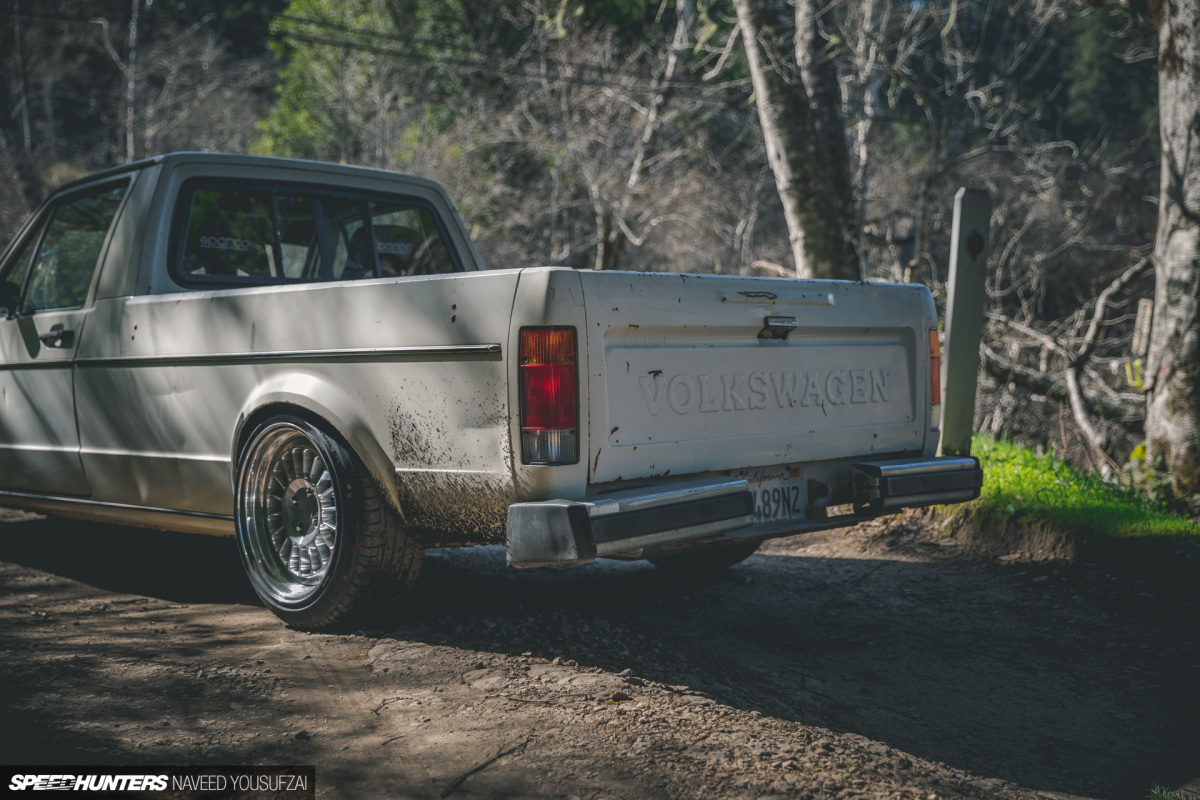
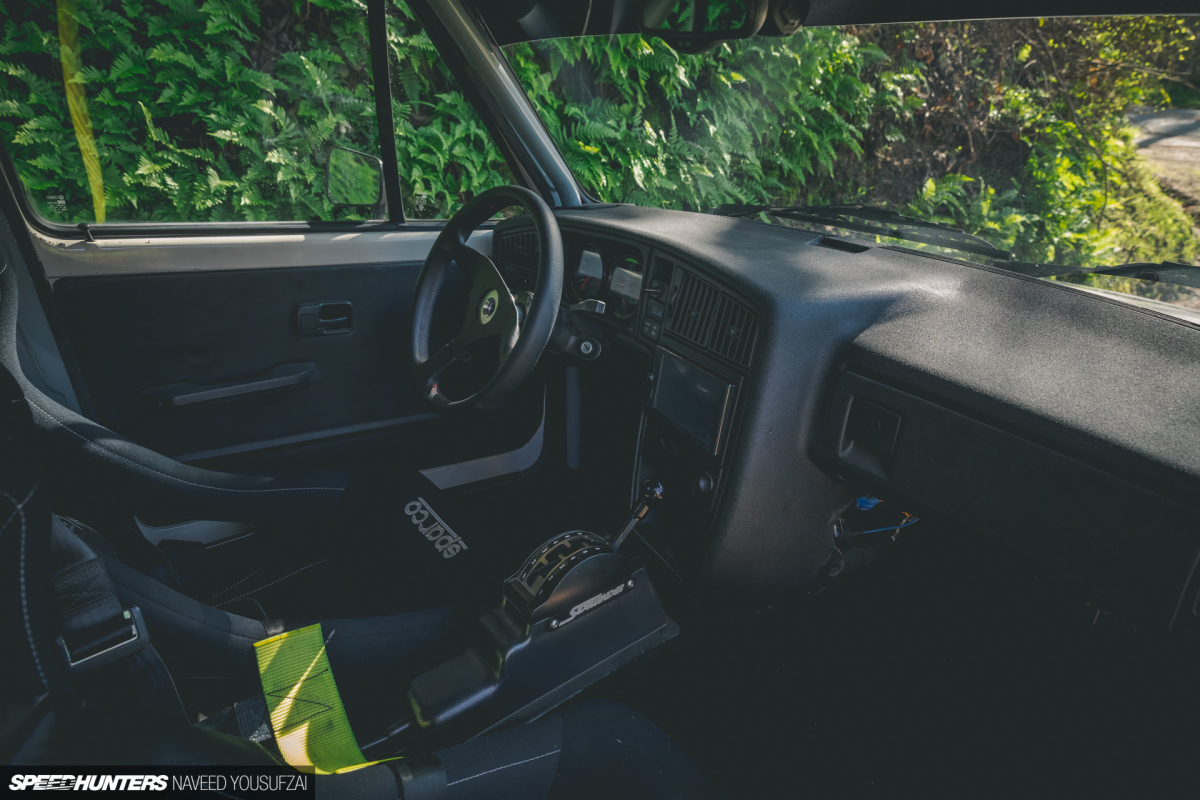
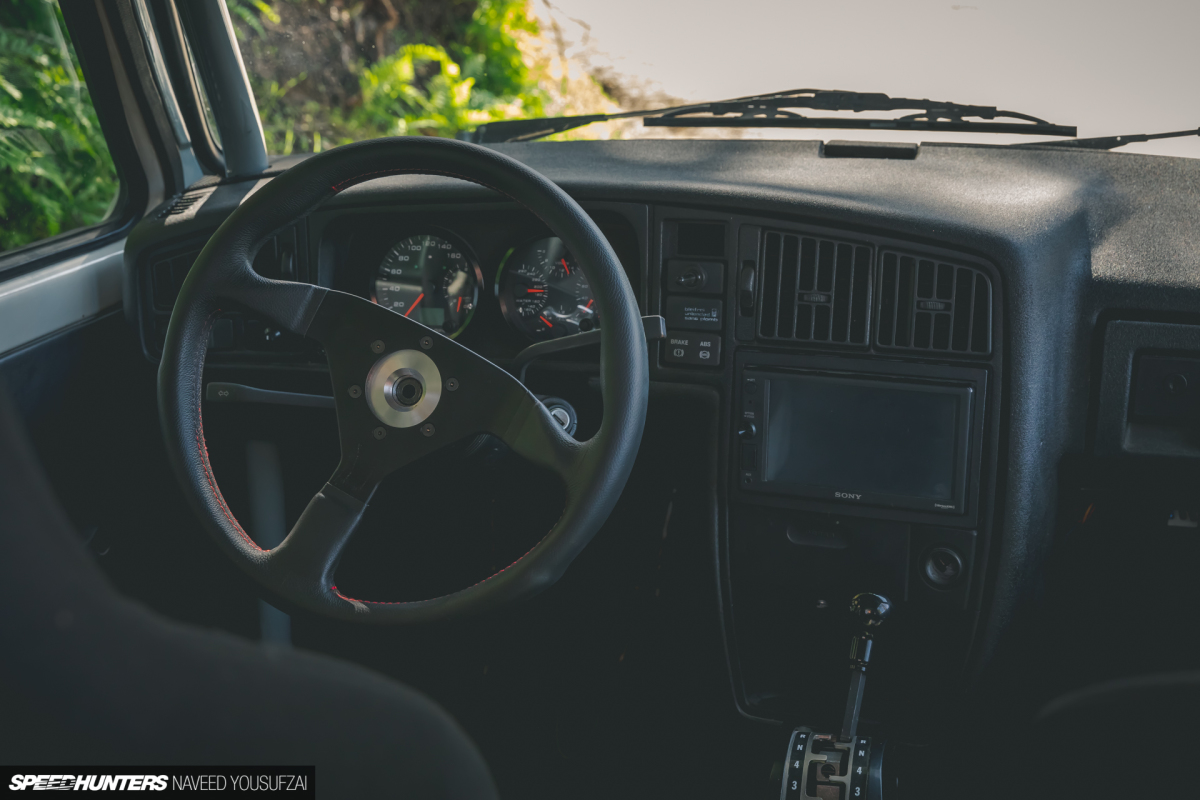
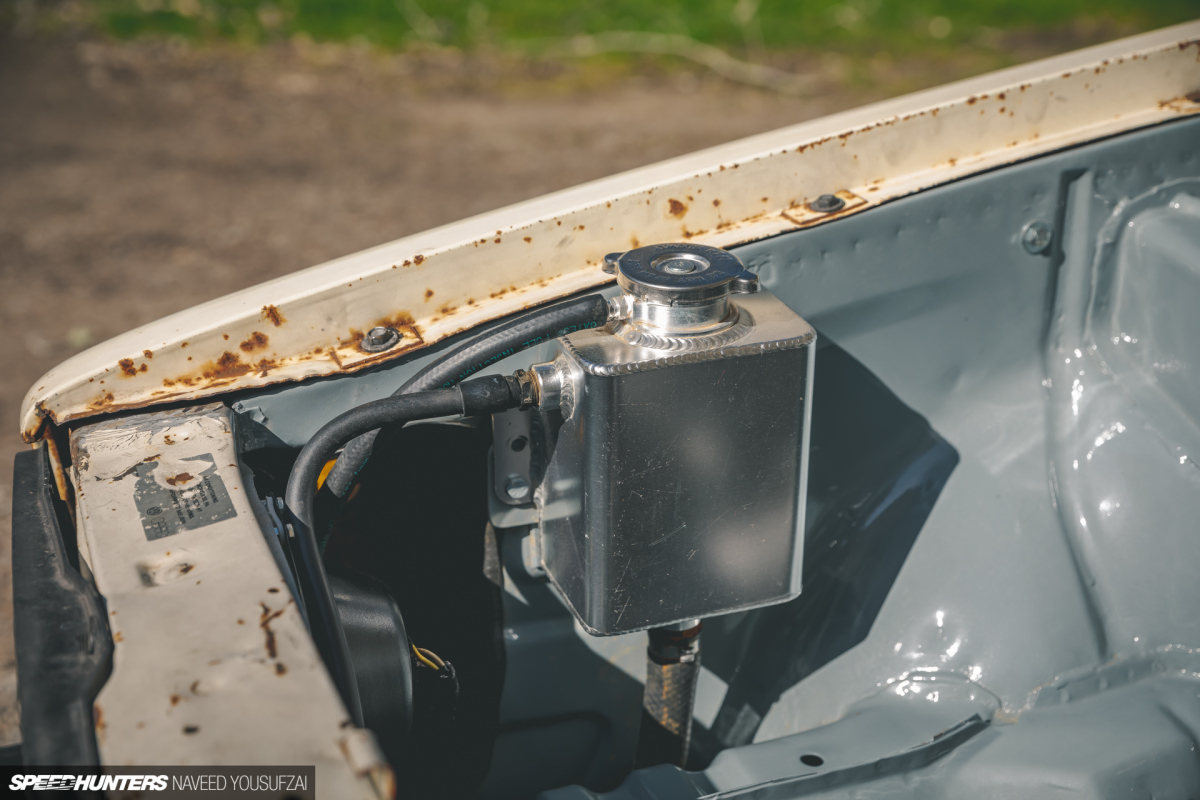
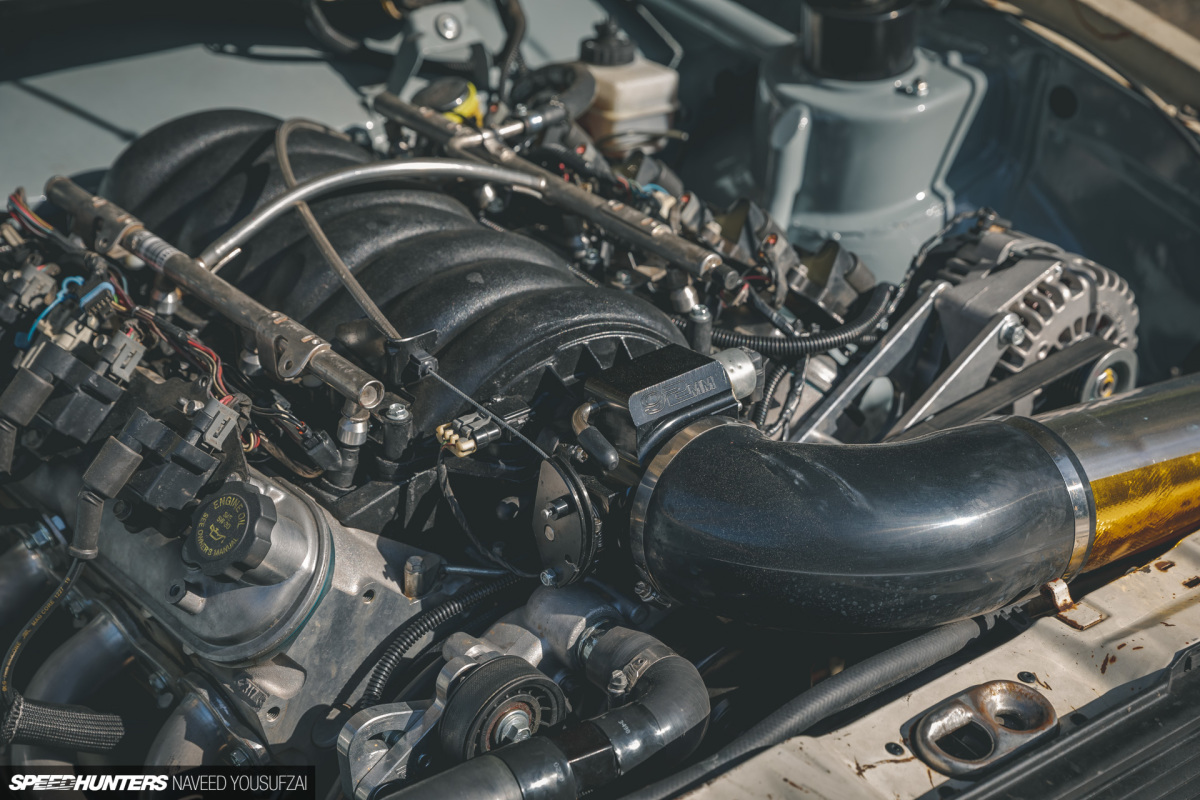
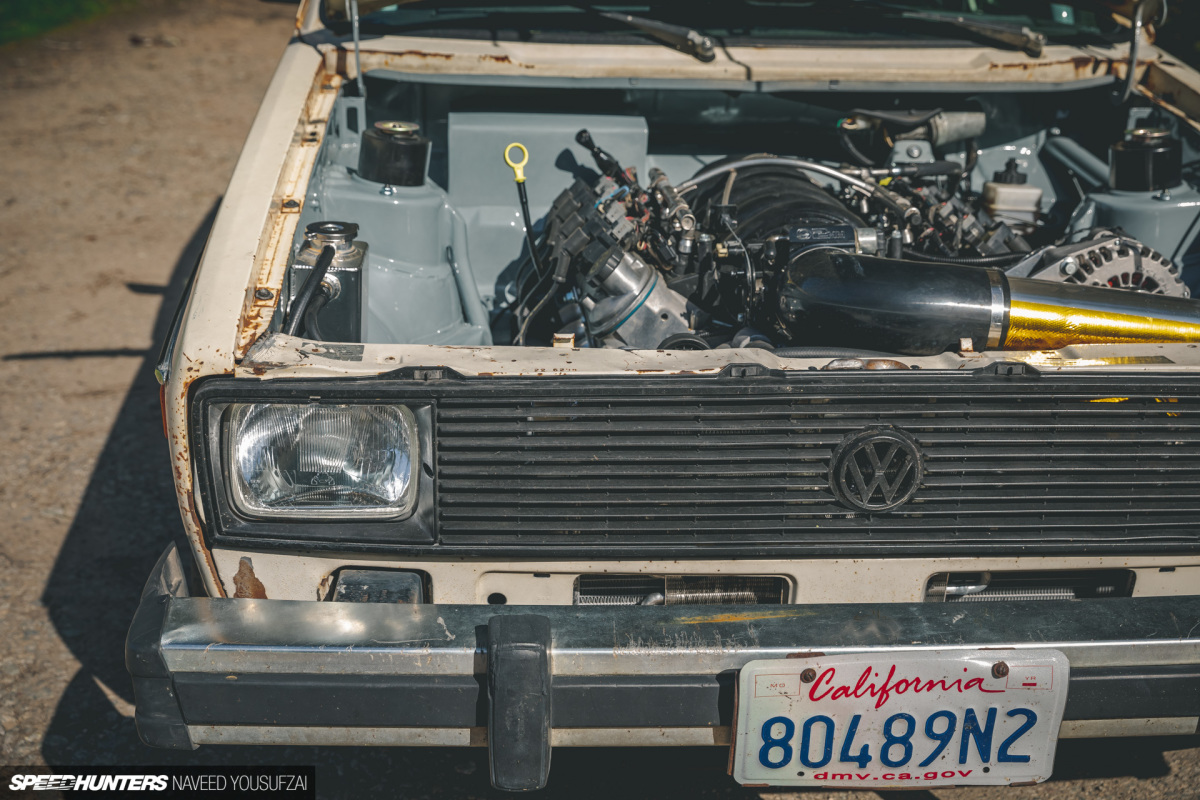





A lot of the appeal is actually that they're plentiful to find over here in Europe, and can be driven in bad weather safer (especially for new drivers) than something RWD with no aids.
Golf/watercooled VW's has nothing in common with the air-cooled VW's and air-cooled Porsches, so you won't be blamed for not being into it that much when you own a 912.
And let's be honest, everyone that experimented working on or owning both water-cooled and air-cooled VW's will tell you how mk1 and mk2 Golfs are awful, poorly engineered cars compared to a Beetle, an early 911 or to your 912.
Ive owned multiple aircooled beetles, porsches and watercooled mk1's and I completely disagree that the mk1 rabbits are poorly engineered. They are simple and reliable much like the early beetles were and drive well as long as they are properly maintained (like all vehicles).
Don't know if you do all the work on your cars yourself. But doing basic maintenance : replacing the clutch disc, rebuilding the gear shifting assembly, etc... you see how terrible Mk1 and 2 Golfs are. Not to mention the poorly designed body panels and their "double skin" metal sheets, not a surprised most of the stock ones you see are rust buckets. I'll agree that early Mk1 are less worse, but they are still poorly engineered compared to a Beetle. And for what ? A Mk1 offers nothing more than a Beetle, I currently own 2 Diesel Mk1's and compared to my Beetle it gives you as many emotions as driving a tractor. Owned a GTI a few years ago, and compared to a hot-rodded Beetle the least you can say is it's far from impressing for the money people ask for it nowadays.
I do all my own maintenance, Ive built motors for both rabbits and beetles and Ive owned both gas and diesel mk1's.
Changing the clutch isn't difficult, and im not sure if you mean the shift linkage or rebuilding the actual transmission but neither are that difficult. Im not sure why you think the beetle was so well engineered but the truth is that in stock form the beetle doesn't drive as well as a rabbit. The aircooled motor doesn't last as long as the watercooled rabbits (diesel or gas). The rabbit has better heat, more storage, better longevity, and better safety. They are both good cars but you have to remember that one was designed in the 40's
I could return the question and wonder why you think the Mk1 is so well engineered. In stock form a Mk1 offers nothing more, strictly nothing more, than a Beetle. Brakes aren't safer especially on early Mk1s (on that point the early GTI is a totally ridiculous and dumb car), steering is much heavier, zero driving sensations, it feels like driving any other random car and diesels are as fun to drive as tractors. As for longevity, Mk1s are far from standing the comparison with most of the 40s/50s/60s cars. As any 70s cars they are well known for their rust issues mostly due to a poor unibody conception, weak electrical wiring and components, and globally cheaper materials used. You just can't say a Mk1 has better longevity than a Beetle. Compare the last 1303 Beetle and the early Mk1, all you see is the gap and how the Mk1 was engineered to be cheap to produce, easily and quickly repleacable. And then just for fun compare a split/oval window Beetle to a Mk1 : clearly when it comes to longevity now the Mk1 is absolutelty awful. These Beetles are now 70 years old and you can relatively "easily" find untouched ones, still in orignal paint, with stock engine/gearbox, still perfectly working and able to go throught the MOT with no problem on the sheet. I don't think you'll see a lot of 70 years-old stock, untouched, never restored, Mk1s on the road in 2050... and even less of them will then be able to go through the MOT... personally I think it's already rare now in 2020 to find unmolested Mk1s. Now, if you compare Mk1s to other cars of its generation : yes I'll agree it is then not that bad, I'll take a Mk1 anyday if I had to choose between it or a Mk1 Ford Fiesta, Renault 5, early Opel Corsa or Peugeot 205... Most of the other small/middle sized FWD cars engineered in the 70s are inferior to the Mk1s and you rarely see them on the road for a reason.
Disk brakes are better than drum, and they use a brake booster. Steering isn't much heavier and you have the option of power steering. I have a mk1 and a mk5 gti and the driving sensations are completely different so I have no idea where you get that from. I have seen far more rusted out beetles and buses than mk1 rabbits or jettas but that has nothing to do with build quality, just age and neglect. The drivetrain on a mk1 rabbit is far more robust, there are multiple reasons they went away from aircooled.
The beetle electrical is a joke, I had 4 fuses just for the headlights lol. The beetle was designed to be a cheap throw away car the same as the rabbit.
Companys have gone away from swing axles, torsion bars, aircooled engines, points ignition, drum brakes, and carburetors for a reason. The beetle worked well during its time period but its far behind the rabbit in terms of comfort, reliability, practicality and longevity.
Many Beetle models came with front disc brakes as well, and we know early Mk1s didn't have a mastervac and that when it was added it didn't really make any difference at all (not to mention that on a rear-engined car everybody knows the balance of having bigger brakes on the front axle is not necessary the best). I have no idea why throwing the Mk5 into that discussion. If anything Mk1s are as are dull and boring to drive as any FWD car, and for half what costs a Mk1 GTI now you can build a hot-rod Beetle that will easily be far more efficient, fun and interesting to drive. I honestly don't know how you can say the Mk isn't heavy. As for precision if people owning Beetle made the effort of rebuilding their steering-box they would find how precise it can be, but most beetle owners like to pretend "it came like this from factory". I don't know about your skills en view of electrical wiring, but if you had to have 4 fuses for the headlights to work I would stop trying to fix electrical issues if I were you. Mk1s are known for their cheap plastic connectors and their cheap plastic fusebox that don't go well with vibrations and dirt. As for rust issues we must not live on the same world, everyone knows the weak points of Mk1s, inculding the windshield bay, rear fenders arches... and the list goes on. Bought my first Mk1s in the early 2000 when these cars were only 20 years-old, and it was already a common problem and difficult to find unmolested cars. Mk1s aren't robust cars at all, it's just fact : thin metal sheets and doubled metal sheets rust faster than plain metal thick ones. Companies went away from everything you mention for a reason, that's true, and that reason is making cars cheaper to produce to make a better profit, not to to make them last longer... unless you believe in what car companies are telling you to convince you that taking a new loan to buy their latest model is the best decision you have ever made, and if your only interest in cars is driving from A to B in the morming and to make the drive back in the afternoon. It may come as a surprise but modernity isn't always the best thing. If you know how to maintain all of these elements, they are more robust than anything produced since then. Golfs are the begining of a completely different automotive era and all the generations of cars engineered in that period of time were built to tend to profit and not durability or longevity. It's only a matter of fact, everybody knows that. You love Mk1s (it's true they are not that bad compared to other late 70s cars and I wouldn't have bought and sold dozens of them since almost 20 years if they weren't okay-ish) but that won't change facts. And let's be honest, claming the Beetle "pan + rear swing axle + front beam axle" conception is not simple, not effective and not durable and robust, is complete non-sense and bad faith.
Poorly engineered but the engineering still exists within production today and as one of the most sold vehicles. Right. The golf didnt replace the beetle for no reason.
(The Golf didn't really replace the Beetle. There's a reason why Mk1s and Mk2s were produced for more or less 10 years each, while the Beetle was produced from 1938 to 2003. And I won't even consider the other Golf generations as being the same car, as with each new model they have less and less in common with each other, and they could be badged Peugeot, Hyundai, Opel, or anything you want, it would be the same car)
I don't know where you live but here in America they definitely stopped making them (beetles) in 1979. Its a unibody car with a steering rack and a FWD engine and a beam in the rear. If you think its poorly engineered you might as well say that about everything else then. Of course its a cheap car, its a volkswagen. But you want to compare it to an Audi 100ls with inboard brakes? Still a cheap car. Sometimes simple engineering is just good engineering and the golf is definitely an example of that. I mean the audis are basically the same concept now with a diff in the back.
That's a matter of point of view. Again, if you consider good engineering for a car : being cheap to produce (and there's a diffrence between a "cheap car" and a "car that's cheap to produce"), being easy to be driven and mostly to be driven by people who don't care about cars, being reliable for a pre-defined period of time until the next new model is being released, and then have people wanting to get rid of the previous one to buy it... then yes that's good engineering, to make profit. It's even worse with Mk2s, who are anything but simple compared to a Beetle. Now if your point of view as a car enthusiast is : to have fun driving your car, to actually feel something driving it, to be able to have the satisfaction to do most of the maintenance and common repairs by yourself, to have 50 or 60 years-old cars stock and untouched that are still perfectly working... then yes, the more modern you'll go, the more everything is poorly engineered.
I don't live in USA (where they actually never produced Beetles btw), but they definetely produced them until 2003.
Also unibody car : cheap to produce yes, but awful when it comes to repair rust issues or important damages after crashing it, it becomes quiclky very expensive, and to some extent your car is only good to be crushed. On a Beetle, you'll have to have the pan sit for decades into water for it to be impossible to re-use. Knowing that the main pan central frame on a Beetle is where your VIN is stamped, you can rebuilt the whole car around it and register if officially with no issues. The Golf : if the unibody goes to the crusher, the VIN and registeration goes away with it and you are left with nothing (if you play it legally of course...).
That's not really what defines good engineering. Golfs are engineered to be cheap to produce, not to be good cars or to last 50 years. They are like any other European or Asian middle sized cars. And when you restore or work on Mk1s you already feel that's where they were going compared to Beetles (and again, Mk1s are the less worse). I won't even mention the most recent generations of the Golf, but if the only goal is to make a maximum profit and have people to buy a new car every 5 years or so, whether it's badged VW/Seat/Audi/Skoda, yes you can call that "good engineering".
Can you say where you photographed them? It looks familiar
Well it’s a different kind of car. They’re like little go carts you can throw a diesel in, turbo diesel, supercharged 4cylinder, reliable light 1.8t, high revving 16v, or a vr6. They’re tin cans that are raw vintage. When you lose the whole my car is better because it’s RWD with 500hp, or my car is more expensive than yours concept you will understand. I would set fire to my e9 before any of my rabbits. I’m convinced I will never love another car more than the mk1 chassis
Now this is dope!
Whoa! I know that smog shop where they did donuts! I know that lake in the background! These little monsters live in my area?!
Naveed, what us VW people like about VAG is that they are small, good on gas, can be tuned make high horsepower! I personally do not like VWs after the MK4. My Jetta is a 1995 MKIII in dusty mauve and I've just about restored/tuned the entire car. Just like all these Honda guys who buy those 1995 Civics and drop $10K on the motors. My neighbor has a 2008 MK5 GTI with an APR Stage 1 tune and this car flies! My Jetta came in 2nd in ECS Tunings virtual car contest in my category. Google: ECS Tuning + virtual car show + Purist. Scroll all the way down to the bottom and you will see it and my build list. Owned it 25 years.
I actually expect both being LS swapped, but I'm surprised the Golf actually has VR6.
We need more sleeper threads like this! I wonder if the Rabbit would make a good autocross car.
https://hipotecas100sin.joomla.com/
Love the cars and always love reading your articles. My favourite SH writer by far